 |
 |
 |
 |
 |
 |
The Industrial Heritage Group
back to The Industrial Heritage Group page
Wednesday 22nd October 2025.
We didn’t venture out this month. On Nov 26th we shall have our annual planning meeting to try and sort out some interesting places to visit next year.
Any ideas as to where we can visit next year will be very welcome , and if anyone would like to volunteer to give me a hand in arranging the schedule for the year, I would be most grateful.
We shall meet at the Bluebell pub in The Callis, Ashby at 10.30 am. The landlord has offered to put on refreshments and some lunch afterwards. Details to follow.
Wednesday 27th August 2025.
The group took a summer break in August as many members had holiday and child-minding duties. Unfortunately the September trip to Beamish Outdoor Museum near Durham has had to be cancelled. We are looking at what else might be arranged to replace it.
Wednesday 23rd July 2025. Shrewsbury Prison
21 Ashby u3a members go to prison! Fortunately only for a look round this very interesting site. We were let out afterwards. Shrewsbury Prison is tucked away up some very narrow roads right next to the back entrance to the railway station in the middle of town and not too easy to get to, however we all arrived at much the same time and were able to park inside the prison grounds.
The prison was built in 1793 and only decommissioned in 2013 after 220 years service. Amazingly it wasn’t closed because it was out of date but because it was overcrowded. In 2008 a report stated that it was the most overcrowded prison in England and Wales holding 326 inmates in a space designed for 170. Inmates were moved to more modern prisons in the area.
The original building was constructed by Thomas Telford but a new building was erected in 1877. We were guided round the building by Dan, a local historian, who told us all the stories of early Georgian and Victorian times as well as what it was like to be banged-up in there in recent times. His descriptions really told the story with details you wouldn’t think of and with great humour. A thoroughly enjoyable and fascinating tour. Rather than stay for a plate of gruel (only joking, the café looked OK) we decided to walk down the road to ‘Spoons for lunch before setting off for home and braving the A5 and its roadworks on the way home.
Friday 27th June 2025. Abbeydale Industrial Hamlet, Sheffield
Hardly any of us had heard of this museum even after 12 years of visiting heritage sights around the midlands but one day Mr Google offered it as a venue out of the blue. And well worth visiting it was. This hamlet of 17thC houses and industrial buildings had been in use until the 1930 when it was abandoned and rescued by a benefactor in the 1950s which stopped it being demolished for a housing estate. It sits on the SW edge of Sheffield alongside the R. Sheaf, from which Sheffield gets its name, and was near to various resources such as wood, coal, limestone and river water which allowed it to be one of the earliest places to convert iron into steel. But it went on from there to go through all the processes of smithing and grinding to turn steel ingots into scythes and sickles. All this was powered by 4 large water wheels fed from a dammed lake immediately behind the hamlet which in turn was filled from the Sheaf. Our guide Janet showed us around many of the buildings explaining all the processes involved then left us free to explore the rest of the site. All the buildings are in a remarkable state of repair but unfortunately the water wheels and the huge wooden shafts which drive the drop hammers and grinding wheels and power the furnace bellows are in need of much restoration and the dam has sprung a leak so the lake is almost empty. They have applied for a Lottery Grant so maybe one day they will run again. Entry was free but we paid the optional donation of £5 ea and the guided tour was a very reasonable £7 ea. Very worthwhile and could stand another visit in the future.
Wednesday 30th April 2025. Britvic National Distribution Centre, Magna Park, Lutterworth
This month we visited somewhere different to our usual old factories or museums. This time we went to Britvic’s national distribution centre (NDC) on Magna Park outside Lutterworth.
Magna Park is worth a mention in it’s own right as it is home to warehouses of some of the UK and Europe’s most recognisable brands including Toyota, BT, Asda Walmart, Disney, DHL, Lidl, Primark and of course Britvic. The site covers 550 acres and is Europe’s largest distribution centre. Despite this most of the buildings are out of sight behind trees and bushes making it a very green area, but quite difficult to navigate around as everywhere looks the same! When the Park was founded they planted 1 million trees on site.
Arriving at Britvic we were given a warm welcome and shown upstairs in the huge building to a conference room where Ian and Paul, our guides for the morning explained how the site worked.
The first surprise was that Britvic do not own the site nor do they employ anyone on it. The site is owned and run by Wincanton Group, who started out as in the dairy business shipping milk. They grew out of Cow & Gate (now Unigate). They are now one of the biggest logistics companies in the UK. Despite this most of the lorries taking goods to and from the warehouse are run by Eddie Stobbart. Logistics seems to be a strange world of diversification.
Britvic is now part of the Carlsberg Marston’s group and have 39 brands of non-alcoholic beverages in their portfolio including those made under license from Pepsi, plus the all the beers in the Carlsberg group.
So what happens at the NDC?
Britvic makes many of its drinks at Rugby where they are canned or bottled and then delivered by truck to NDC. There a robotic train of wagons takes them to the absolutely huge automated high-bay warehouse where they are stacked waiting to be sent out to retailers. This part of the building is 22m (70ft) high. It holds almost 50,000 pallets of drinks from all the brands. If it was full of standard cans of Pepsi there would be 155,400,960 cans = 51,000,000 litres of drink weighing 51,000 tonnes.
When a retailer, be it a supermarket chain or a smaller pub or shop places an order different products, they are taken out of storage by the same robots, and sent to the packing bay. There a surprisingly small number men with fork lift trucks split up the large pallets of single drinks and assemble new pallets with the mixed order. These are then wrapped and sent to the loading bay. Large orders for whole pallets go straight to the loading bay. There another fleet of forklifts whizz back and forth picking up pallets and loading them on to waiting trucks. A truck should only be in a loading bay for 30 mins before it is loaded and sent out.
All this movement of palletised goods is controlled by bar-codes on the pallets. The robots and the forklift drivers are told what to pick up and where to take it. The barcodes are checked for each movement.
But this is not the end for our drinks. The trucks will take them to a retailers warehouse or regional distribution centre before they move again to a supermarket’s own warehouse and finally out on to the shop floor.
This goes on 24/7, only stopping on Christmas Day and New Years Day. Amazingly there are only 65 people on the warehouse floor spread across 3 shifts, so about 20 people at any one time. However there is a much larger workforce looking after ordering, contracts, software and physical maintenance. Logistics is very hi-tech these days.
A fascinating and complex story. And to think this is happening in warehouses all over the country to all the other products and food that we consume every day.
Wednesday 26th March 2025. Lincoln Cathedral guided roof tour
It doesn’t get much more Industrial Heritage than seeing how buildings were created nearly 1000 years ago. The earliest parts of the cathedral building were started by the 1st Bishop of Lincoln, Remigius de Fécamp, in 1072. It was completed in 1092 but severely damaged by earthquake in 1185 and rebuilt over the following centuries. The cathedral reached its current form by 1380. At that time it had a tall spire atop the central tower which reputedly made it 525 ft tall. This would have made it the first building in the world to be taller than the Great Pyramid of Giza. Unfortunately the spire was blown down in a storm in 1548 and never replaced. If it had continued to stand, it wouldn’t have been surpassed in height until the Eiffel Tower was built in 1887-9.
Our tour, led by the very knowledgeable David, took us up into the twin towers of the west end façade via various spiral staircases where we were shown how the building had moved in the 1185 earthquake and how it was saved from almost certain collapse in the early 20th C by pouring 19,000 tons of concrete into the gap between the inner and outer walls. Unfortunately this concrete is reacting with the limestone walls themselves and may have to be dug out again before too long! From there we went up inside the roof itself to see the forest of wooden beams holding up the roof. Many of these beams are original to the 1380 construction and the oak trees would have been up to 200 years old when felled making the wood itself over 800 years old. We stepped out on to a small balcony on the south side of the roof just in time to hear the striking of the Great Tom bell at 12 noon. The bell weighs over 5 tons and was cast in 1835. From there we went back to the West façade but higher up and were allowed out from another balcony with excellent views of the castle, city and beyond.
We were also able to look down into the nave from the west end and to get right up close to one of the amazing stained glass windows. We finished the tour by walking the length of the nave not at floor level but along the upper gallery. This fascinating tour lasted a full two hours rather than the advertised 90 mins giving us little time to look around the rest of the cathedral so we had a rushed lunch in the cathedral café before our car park tickets ran out. That leaves us much more to see next time!
Friday 7th March 2025. JCB factory tour, Rocester, Staffs
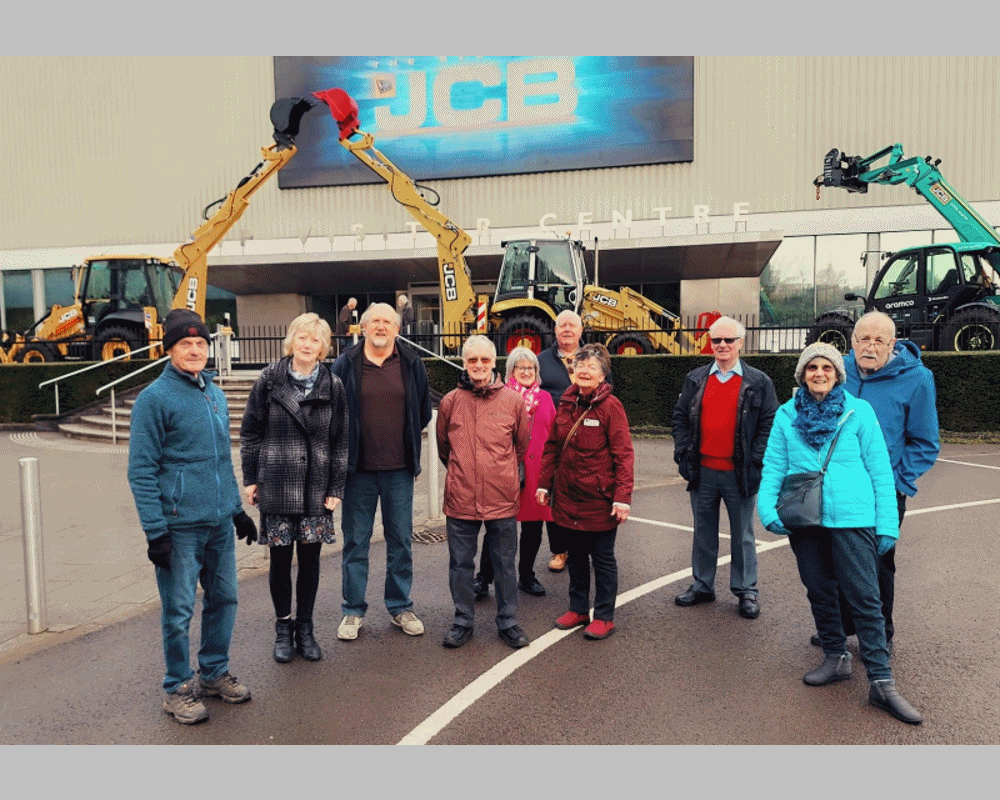
JCB are the makers of the ubiquitous yellow diggers seen on building sites, roadworks and farms around the country but they also make a whole range of related products around the world. It has factories in the USA, Brazil, China, India and Russia, although it has suspended operations in Russia since the invasion of Ukraine. It makes almost every part of its machines itself at its various factories, including the self-designed engines which in future will be hydrogen-powered rather than diesel.
For the tour of the spotlessly clean factory we were divided up into 3 groups each with their own guide. We started with the goods-inward warehouse which, although the factory operates on a just-in-time basis, seemed to be a huge version of an Ikea warehouse filled to the high ceilings with racks of parts. It is important that parts arrive on time as stopping the production line costs £10,000 per minute!
We saw how sheets of metal are cut, folded and welded into various parts before being painted and gradually assembled into diggers. Engines, axles, wheels and tyre, drivers cabs and the all-important diggers all being added to the chassis.
The site has its own doctor’s and dentist’s surgery to save workers having to take off many hours for an appointment. It must be worth getting a job there just to be able to get a dentist appointment! They also have there own college across the road where apprentices get their formal schooling and ultimately their qualifications.
We finished with a tour of the JCB museum with exhibits from Joseph’s very first products through to the latest. There was also one of the fleet of scooters he bought because they had JCB numberplates which he transferred to the company cars and models of all the private planes that the company has owned. Joseph, as a qualified pilot, would fly prospective customers to E.Mids airport before driving them to Rocester in his JBC 1 numbered Cadillac. Always the showman.
A fascinating look at one of the UK’s most successful companies who seem to like to do things their way.
Wednesday 22nd January 2025. Taylors Bell Foundry
For our first trip of the year we headed off to the Taylors Bell Foundry in Loughborough. This is now the only surviving bell foundry in the country after the Whitechapel foundry closed down in 2017.
Taylor’s is now the world’s largest working bell foundry having started in the 14thC and the Taylor family took over in 1784. Originally bell foundries were set up at the church where the bells were to be hung by itinerant bell founders. This eased the transport of heavy bells. Taylors moved to Loughborough in 1839 to cast bells for the nearby church and realised that the adjacent canal and railway offered an easy way to transport bells around the country. They moved into the present building in 1859.
The company went into administration in 2009 and was rescued by a consortium who later transferred ownership of the buildings and equipment into a Trust in perpetuity. The trust has received funding from Historic England and the Lottery Heritage Fund to maintain the buildings and set up the museum on site.
18 of us met at the museum for the start of the tour where we had a chance to look round before watching a video about the company’s history and then setting off on the tour. Our excellent volunteer guides were a wealth of information as we toured the various departments where bells were being repaired, iron frames are cast (not today sadly), the wooden wheels which swing the bells are assembled, finished bells are tuned and finally we could look down on the foundry floor to see where the bells are cast. Unfortunately visitors are no longer allowed on the foundry floor as health and safety have deemed it too dangerous, despite no casting actually taking place.
Our first stop was the yard where some bells were being unloaded from a lorry and being brought in for refurbishment. After a while bells get chipped or flats form on them where the clapper strikes the rim and the crown where the bell attaches to the headstock may start to crack. Taylor’s can repair all these faults and more before reinstalling them in the church or belltower they came from. Our guide, a bellringer himself, pointed out that bells can last a long time. One bell in a peal that he rings dates to the 1300s!
We watched a very skilled carpenter making part of a wheel to which the ropes are attached in order to swing the bell. These wheels can be up to 3m in diameter are made similar to a cartwheel but much more accurately and each part is made from different woods to suit the loads or wear on that particular part.
The bells are cast from an alloy of copper and tin called, strangely, bell metal! The largest bell cast by Taylors is the Great Paul in St Pauls Cathedral, London which weighs an amazing 17 tonnes. However the largest existing bell sits in the Kremlin and weighs 216 tons but it cracked in a fire before ever being suspended or rung. A bell cast in 1484 in Burma supposedly weighed 300 tonnes but it sank in the river whilst being carried on a raft and has never been found.
English bells are tuned by removing metal on a lathe at different points to give 5 different notes, and also tuned to the other bells around them. Taylor’s currently has just one man doing this work but he is nearing retirement and so he is training an apprentice to replace him. Without tuning the bells they cannot be run in a peal.
There was much more to see and report from this fascinating piece of English history.
Wednesday 27th November 2024. Planning Meeting at the Blue Bell Inn
A dozen members got together on Wednesday to try to put together a programme of visits for next year. There was much discussion on suitable venues, some new and some that we've been to before but newer members may not have visited. It was a productive meeting and we followed it up in the traditional way with lunch and a drink at a fine local pub, the Blue Bell in Ashby.
We will publish the first dates as we get them finalised.
Wednesday 23rd October 2024. Black Country Living Museum, Dudley
This month we ventured into the wilds of Dudley to visit the Black Country Living Museum.
14 members car-shared around the M6 and M5 with fortunately few hold-ups to arrive around 10.30.
The place has changed a lot since we last visited in 2016. A vast car park and new entrance building have been built complete with café and shop and the museum itself has several new streets based upon the 1940s, 50s and 60s.
We were met at the café by a lady looking out for groups and helped to buy our group discounted tickets despite being slightly below the required number to qualify for a discount, then provided with maps and wristbands. Very impressive service.
We split up into groups to go our separate ways but most seemed to head straight for the drift mine. Here we were equipped with hard hats and very dim lanterns as we followed our guide around the mine. Just how much is real and how much has been recreated is difficult to tell as it is so well done (and you can't see much in the dark!) The roof is low, very low in places, and even the shortest of us had to stoop in parts. The storytelling is very good and gives a glimpse of what life was like to be a miner in the 1850s.
After that we visited various factories, foundries, shops and houses all staffed with costumed guides to tell us the history of the particular building and its era.
From the butchers to the ironmonger, the co-op of 1949 to the 60s record shop with its listening booths, from the Infant Welfare Centre to the old-style barbers, there was plenty to see and in many cases remember from our childhood.
There are houses from all eras. One set up as in wartime with taped up windows and grow your own vegetable plot in the garden, another staged as in 1968 complete with Dansette record player and a period TV actually showing 60s programmes.
There are also lots of period eateries and pubs. Unfortunately the Workers Institute that we went to had run out of hot food and the fish and chip shop had a long queue all day, but I think everyone got fed and watered somewhere.
As it was half term there were quite a few school parties going around and it was interesting to see the expressions on the youngest faces at the tales told to them by the guides.
There are so many things to see and do, that it is almost impossible to do it all in one day, so we may be back again in the future.
Everyone seemed to have a great time and it was a very worthwhile visit. Even the weather was kind.
Wednesday 25th September 2024. The Museum of Timekeeping, Upton near Newark
Do you know the difference between a clock and a timepiece? Following our fascinating and informative tour of this museum our u3a members can answer that question easily. Although our guide, Dave, was relatively new to the job, he had all the facts at his fingertips and provided us with an excellent introduction into the history of timekeeping in Europe.
We learnt that the oldest working clock in Britain is in Salisbury cathedral and that the miniature figures which move or strike the hour on some clocks are called Jack’s figures. Early clocks were gravity driven, rather than by a spring. The mainspring was invented in 1505 and the first pocket watch was in the shape of a pomander which opened up to reveal the clock. In 1657 the pendulum was invented which led to much more precise timekeeping. No talk about timekeeping would be complete without mentioning Harrison’s H4 marine chronometer which solved the problem of how to calculate longitude while at sea. Harrison's solution to a public competition revolutionized navigation and greatly increased the safety of long-distance sea travel, although he never received the full reward due to political rivalries.
The Huguenots were the best clockmakers for several centuries after fleeing France for Switzerland, eventually settling in England, mainly in the Clerkenwell area of London. The English, however, stole the Huguenots’ ideas and went on to become the best watchmakers in the world. This was a lucrative profession and the skill was a closely guarded secret, threatened by competition from mass production in the early 19th century. The European and UK makers were finally put out of business by the Ingersoll company in the USA mass producing watches for $1 which they exported around the world.
We saw a wide variety of clocks and timepieces, including early gravity driven and pendulum timepieces, Captain Scott’s watch, the hands from the original St Pancras station clock, a water-driven clock, a clock made completely of wood and listened to various versions of the Speaking Clock.
Lunch was taken at the Admiral Rodney pub in nearby Southwell with some of us then looking round this interesting town, famous for its Minster.
Oh, and the difference between a clock and a timepiece is that a clock should have a bell to sound the hours. Clock is an anglicisation of the French ‘cloche’ meaning bell. Early instruments for measuring time had no dial or hands, but rang a bell every hour. Without a bell, it is just a timepiece.
Wednesday 28th August 2024.
We took a summer break this month due to many people including our leader having many other commitments.
We shall be back in Sept on the 25th with a guided tour of the Museum of Timekeeping at Upton near Newark. We have visited it before some years ago and it was fascinating. Hopefully many who haven't been before would find it equally interesting and it is well worth a second visit if you have been before. Timings and other details will be sorted soon.
Wednesday 24th July 2024. Ecclesbourne Valley Railway
We've been lucky with the weather on our trips out this year, and this was no exception. On a gloriously warm sunny day 13 members car-shared the drive to Wirksworth. After clearing Derby, the drive up country lanes to Wirksworth is lovely and parallels the route of the railway.
On arriving at the station we bought a string of tickets at a good discount rate and were shown to our carriage by the station master. As the train was quite long and the platform quite short, we had to get on in the middle of the train and walk through to our carriage at the front of the train. Armed with coffees from the station buffet we sat and waited for the depart which was bang on time.
The route is quite scenic on one side but somewhat obscured by trees on the other which is a bit disappointing but nonetheless we all enjoyed the smoke and smell and nostalgia as we chugged down to Duffield stopping at a couple of halts on the way.
Arriving at Duffield we disembarked to watch the loco being shunted round to the other end of the train, giving everyone time to take photos and enjoy the sunshine. Twenty minutes later we were off again on our way back to Wirksworth. Not perhaps the most exciting or scenic railway in the country but we all had a good time wallowing in memories of steam when we were younger.
Leaving the cars in the free station car park, we walked the third of a mile up the hill to the interesting town centre and our lunch at the Hope & Anchor pub.
The pub was pretty quiet for a Friday lunchtime, in fact we were practically the only ones there, but at least that brought up the pre-ordered food pretty quickly. And very good it was too. Everyone commented on the quality and quantity of everything and how well it was cooked.
A few people went to look around the town whilst others browsed the station bookshop before returning to the now scorching hot cars. My car said it was 30 deg outside in the sun!
An uneventful journey back finished a lovely day out.
Wednesday 26th June 2024. Lion Salt Works
On one of the hottest days of the year so far, 3 car loads headed up the M6 and on to Marston near Northwich and the Salt Works museum. After a quick coffee, our guide for the morning, Alex, took us on a guided tour of the works and surroundings.
The salt works was founded by the Thompson family in 1894 and the family owned it until its closure in 1986. It was bought by the local council to preserve it and the site is now a preserved Industrial Heritage site owned by the Lion Salt Works Trust. In 2006 it received a £5m grant from the Heritage Lottery Fund. It was the last open-pan salt work in the country. .
Salt wasn’t mined as such, hot water was pumped down a borehole to dissolve the salt and the resultant brine extracted. This was then pumped into large iron pans about 30 x 40 ft wide and 2 ft deep which were heated by coal boilers below to evaporate off the water. Men with long rakes then dragged the salt crystals to the side were it was shovelled into wooden tubs and left to drain. When solid enough the blocks were laid out over heated bricks to dry out. .
Needless to say this was extremely hot and hard work. The men weren't on piecework and so received a flat rate of pay every week which was apparently paid out in sardine tins! After work they could spend their hard earned cash in the company owned pub! .
The blocks of salt were passed through different circular saws and grinding machines until it was the right grade required from pea-sized crystals for the fishing industry down to fine table salt. .
I'm latter years most of their production went to West Africa, Lagos in Nigeria in particular, but this trade collapsed with the outbreak of civil war in Nigeria in 1967. This was the beginning of the end for the business. .
After closure the site stood derelict for many years and the salty moist atmosphere almost destroyed not just the iron and steel machines but also the very fabric of the buildings both the wood and brick rotted away.it took a huge effort to partially restore the buildings and prop them up with new steelworks whilst preserving the look and feel of the place. .
The museum opened in 2015 and has won many well-deserved awards. .
After spending two hours at the site we drove into Northwich for an excellent lunch at the Clock Tower pub before driving home back down the M6 and A50. A fascinating building like no other.
Wednesday 22nd May 2024. Foxton Locks
Despite the appalling forecast, 18 members gathered in Ashby to car-share to Foxton Locks. On arrival it wasn’t raining badly but enough to make walking around all morning unpleasant. Our would-be guide Penny thought so too and offered us a discount price to do the bulk of her talk inside the museum.
The body of her talk was of the Inclined Plane constructed from 1898 to 1900 to bypass the long flight of 10 locks on the grand Union Canal. This would allow 2 boats to descend whilst 2 more ascended with a journey time of just 12 minutes. The locks could only take boats in one direction at a time with a passage time of 75 mins for each boat. This should have been a great success but it was a commercial failure due to bottle-necks further along the canal at Watford and with the railway and, later, motor vehicles taking much of the canal's trade.
The plane was a 75ft (23m) climb up a bank at a gradient of 1 in 4. Two water tanks called caissons, could each hold two 70 ft long barges floating side by side. The barges were hauled in to the caissons by hand and a guillotine-like gate was lowered to keep the water in. The caissons were side-on to the hill and ran on rails up the slope. Steel ropes joined the to tanks together so that as one went up the other came down. This drastically reduced the power needed to move them as the weight of one balanced out the weight of the other. However the whole thing was powered by a steam engine a the top of the incline and it had to be kept steam up all day for when ever a boat arrived. This proved to be expensive as it was reputed to use 3 tons of coal a day despite only producing 25 horsepower.
As it was not a commercial success it was mothballed in 1911 but used occasionally during WWI and then dismantled and sold for scrap in 1928 for just £250. It had cost £40,000 to build.
After Penny's talk we were free to look round the museum and it's interesting artefacts whilst Penny explained the significance of much of them. It was then decided that the rain had eased off enough for us to walk up the hill and round to the top of the incline to look at what is left. There is not much to see except a lovely view of South Leicestershire and a few stone and brick footings. Nonetheless you could see just how steep the incline was and how it connected to the canals top and bottom. We then walked along the towpath to the top of the hill, crossed the canal and walked back down past the 10 locks to the pub at the bottom where we had an excellent lunch. Everyone seemed to agree it was worth braving the weather. If we come back again, we'll watch out for the weather forecast!
Wednesday 24th April 2024. Morgan Motor Company, Malvern
This month we travelled to Malvern in Gloucestershire to visit the famous old motor company Morgan Motors. Morgan were formed in 1909 by HFS Morgan after he had left the Great Western Railway at Swindon in 1904 and set up his own motor garage. In 1909 he started making his own design 3-wheeled car, formed the morgan Motor Co in 1912 and moved to their present site on Pickersleigh Rd in 1914. They have used the same buildings, and several more alongside, ever since.
We arrived, after a very easy trip down the M42 and M5, at their visitor centre in time for coffees in their lovely café. We were introduced to our guide for the day, Julian, who equipped us with earpieces so that we could hear his commentary as we walked through the factory.
Morgan are famous for making cars which look like they are pre-war but have very modern engines from BMW and Ford and their bonnets and modern running gear. However the cars are still very largely hand made both in their bodywork and leather interiors. In each section of the production, chassis and engine assembly, body making, painting and trimming, one person is responsible for each car.
The chassis are now made outside to Morgan's design from aluminium sheets glued together, but all the components are bolted in on site. It is often thought, wrongly, that the cars have wooden frames but that is not quite true. The bodies are formed over ash frames which support the aluminium panels but they are not structural. There has been some concern about ash dieback leading to a shortage of wood frames but we were assured that Morgan have guaranteed supplies for the next 100 years!
The body panels themselves are formed by hand and fitted to the car by one person with cutouts and fixtures hand-welded in place. True craftmanship. The cars are painted by hand with about 15 coats of primer, paint and clearcoat. The leather interiors are hand cut and stitched on site. The choice of colours for both paint and leather is almost infinite. If Morgan don’t do a colour, it can be mixed to any colour the customer choses but the most popular is still British Racing Green!
Morgan made just 845 cars last year. By comparison Mini can make 1000 cars a day!
After watching the assembly progress we were taken to their Archive which is also a small museum of important cars, including a replica of the very first 3-wheeler, some of which are unique and apparently worth millions.
An excellent tour with a very knowledgeable guide who was able to give us several snippets of interesting stories about Morgan, its cars and its people.
From Morgan we drove a few minutes to a lovely pub overlooking a park and had an excellent lunch, with some great beer, served well by great friendly staff. A great end to a day out in a nice part of the world.
Wednesday 27th March 2024. Tower Brewery, Burton
This tour was a change to our usual format in that we met at 6pm for an evening tour of a local industrial heritage site, namely, the Tower Brewery in Burton on Trent. 18 members entered an impressive three-storey Victorian building, hidden away on an industrial estate. We were welcomed by our host, tour guide and brewery owner, John Mills, with a pint of beer or soft drink. Needless to say, my pint of Tower Bitter was excellent. There was plenty of choice; Salts Burton Ale, Imperial IPA and ‘Gone for a Burton’ seemed to be the popular beers.
The open-plan ground floor contained a bar, seating area, brewing vessels, balcony and spiral staircase. The brewery is open to the public only at weekends when it often hosts music events and private parties. Our tour began by ascending the cast iron staircase to the first floor. John explained that in 2000 he was a brewer with Burton Bridge brewery when he heard that the building was for sale. It was built in the 1870s by Thomas Salt & Co Ltd, and later in 1927 owned by Burton brewers Bass & Co. Although the structure was sound, the building was derelict and neglected under its previous owners and needed restoration. Other parties interested in buying the property were interested in demolition and redevelopment of the site, whereas John wanted to restore its former heritage as a working brewery. This ambition matched that of the seller's and after 9 months of hard work, including the removal of 6 tonnes of pigeon droppings from the water tank, Tower Brewery opened in April 2001. The first floor stores bags of malt and a wooden hopper that feeds the ‘mash tun’ on the ground floor. It was clear that John had a deep understanding and love of his craft.
Climbing a narrow steep ladder, we entered the metal water tank on the top floor. This originally provided a gravity feed to the brewing system below. The water supply is still housed at this level but in a small insulated tank in a corner. John was keen to point out 2 engravings from previous employees in the wooden roof structure that recorded evidence of its heritage; ‘Alf Tyers 1957’ and ‘Salts 1875’. In the gloomy and eerie atmosphere of this cold isolated structure you could almost feel their ghostly presence! Carefully descending to the ground floor we had chance to explore the Tap Room, a small ‘snug’ decorated and furnished in 1950s style with its open fire and gas lamps. Then we helped ourselves to a splendid buffet provided by Helen’s Bakehouse washed down by more perfectly brewed beer.
Thankfully, the final part of the tour was on the ground floor where John explained more mysteries of the brewing process, including ‘mash tuns’, ‘coppers’, ‘heat exchangers’ and the all important hops. The tour was a unique mix of industrial heritage and modern brewing practices, enriched by fascinating tales from our guide, John Mills. If you want to sample Tower Brewery beers try Morrisons or Sainsburys in Burton or the Tower Brewery on most Friday evenings.
Monday 26th February 2024. Coventry Transport Museum
10 members made their way to Coventry, and despite a little difficulty in direction finding from the car park, we all got there safely. Our guide for the morning, Matthew, showed us around the key exhibits explaining how Coventry's industry had evolved from ribbon-making and watch-making through sewing machines, to bicycles, motorbikes and cars. At one time Coventry boasted over 50 car makers, although many would-be entrepreneurs didn’t last very long. At its peak in 1960 over 81,000 people in Coventry were employed in motor vehicle and aircraft production. Now only the Chinese owned LEVC remains assembling electric black-cab taxis from Chinese made parts.
One of the most fascinating areas of the museum is the bicycles. From the hobby-horse which had no pedals and was scooted along and the bone-shaker with pedals directly on the front wheel, it is interesting to see the development of the bicycle as people tried sometimes strange designs including the James Starley's famous penny-farthing before his nephew John Starley developed the Rover safety bicycle with two same-sized wheels and chain drive in 1885. It also had the near universal diamond shaped frame we all know.
After the first motor car (technically a 3-wheeled cart) was patented in 1886 by Carl Benz in Germany, car design evolved rapidly. They quickly acquired covered bodies, pneumatic tyres, brakes!, steering wheels instead of tillers, lights and all the modern accoutrements which we take for granted now. Walking round the museum it was amazing to see how fast they developed into something resembling the modern car.
The post-war section gave us all a chance to say 'I had one of those', or my dad or someone in my family did.
Finally the museum houses three land speed record cars, Thrust 2, Thrust SSC and Bloodhound LSR. Actually they are the previous and current record holders and the would-be next holder. All designed and built by the same British team they have held the LSR since 1983. Thrust 2 achieved 633mph and Thrust SSC 763mph, breaking the sound barrier in the process, the only land vehicle ever to do so.
The museum houses over 240 cars, 100 motorbikes and 200 bicycles and is a fascinating place to spend a few hours if you have any interest in transport. We barely had time to have more than a glimpse of it.
Wednesday 24th January 2024. City of Caves, Nottingham
For our first outing of the year, we returned to the caves under Nottingham which used to be accessed from the Broadmarsh shopping centre. As that no longer exists, the entrance is under the tram flyover coming up to the Lace Market. Despite the fact that we had visited before some 7 years previously, this proved popular with members and sold out quickly with 20 of us heading to Clifton South in the morning to catch the tram into the city.
We were welcomed by our guide who was to show as around the caves and tell us all about them. There are apparently over 800 caves under Nottingham, all man-made, carved into the soft sandstone. We were only to see six of them, but they were all fascinating with a rich history.
Some of the caves date back to at least the 9thC and were mentioned by the Bishop of Sherborne in his ‘The Life of King Alfred’ of 893.
It isn’t so noticeable now but the city, like the castle, stands or stood on a cliff overlooking the Trent marshes. This made it easy to tunnel into the cliff face to create some of the caves. Others were dug down from the houses above to create water wells and cess pits. These later expanded into storage areas and later still into cheap dwellings. Two caves dug in from the side in 1250were originally a home but after a rockfall in 1400 were abandoned. By 1500 they had been cleared and turned into the only known underground tannery in Britain. The front opening allowed them access to the river were they would wash the skins in the town’s drinking water! This was banned, so they snuck out at night to do it anyway.
Many of the caves were interlinked particularly the pub cellars, which allowed much illegal activity such as cock-fighting and gambling to go on unnoticed and with many exits should the authorities come looking. The Chartists used to meet in one of the caves.
Also many of the caves were inhabited from at least the 17th century until 1845 when the law was changed banning the renting of cellars and caves as homes for the poor. By this time they had degenerated into one of the worst slums in Britain, rife with disease.
Some good came of the caves during WWII when some of the caves were joined and turned into as many as 86 public air-raid shelters, and one of them is set out as it might have been then. A severe bombing raid on 8th May 1941 created much damage above but all those below were unharmed. The sand that was dug out for the shelters was used to fill sandbags.
This was a most interesting tour and our guide talked us though the various phases of the caves uses explaining it all very clearly and informatively.
Afterwards we retired to the Canalhouse pub which, in keeping with our Industrial Heritage theme, was once a canal warehouse and actually has a wharf inside the pub complete with floating barge. The food and drink were pretty good too!
We returned by tram to Clifton South to pick up the cars and hence home.
Wednesday 22nd November 2023. Planning meeting for next year
16 members came to the Bulls Head in Market Street to try to plan next years trips. There were plenty of good ideas and we have got a reasonable list of places to visit. A few members are researching the feasability of many of them and hopefully we shall shortly be able to publish at least the first few visits.
We won't be meeting in December as something called Christmas gets in the way and so our next trip will be on Jan 24th next year. Details to follow
Wednesday 25th October 2023. Abbey Pumping Station and Wigston Framework Knitting Museum
We had a full house of 20 members for this trip which was as many as Wigston could cope with. The pumping station has no car park but you can use the CP at the National Space Centre next door. On arrival it was obvious that it was still half-term somewhere as the CP was almost full and there were kids everywhere! But it was a lot quieter in the pumping station itself which had much more to offer than just the big steam beam engines. There were displays and exhibits of old and even ancient water pipes going back to Roman times plus descriptions of how water is stored in reservoirs and delivered to the towns. And of course how the sewage is pumped out of town to the treatment works. More unexpected was the display of many of the products manufactured in Leicester from Clyde cars, motorcycles, bikes, along with displays of Victorian bathware and similar objects as well as many details about the trams of Leicester Corporation which ran until 1949.
Of course the beam engines and the whole room built around them are the stars of the show, except that they are only in steam 3 or 4 times a year. Today was not one of them! Nonetheless the massive engines, built by local firm Gimson in 1891 and in use until 1964, are a wonderful sight to see, with the elaborate Victorian decoration so unlike anything that would be done nowadays. An excellent, free, museum that deserved more than the 1hr we had before moving on.
Getting across town to Wigston proved a lot easier than expected but on arrival at the pub they announced that they had no record of our booking! Despite that they managed to accommodate us all and served up some rather nice food, however it understandably took them a little longer than if they had known we were coming, which put us about 20 mins late for our next stop, the Framework Knitting museum.
Wigston Framework Knitters Museum is a Master Hosier’s house with a two story Victorian frameshop in the garden. The house dates from the last years of the seventeenth century and shows signs of various alterations. At the rear is a cobbled yard and a water pump. A two storey workshop extension has been added to the rear of the house. The museum is unique, because when the last master hosier, Edgar Carter died in 1952, the workshop was locked and left. The family would let no-one inside. Edgar’s last surviving daughter was living in the house until she died, aged 88, in the late 1960’s. The house was due to be demolished to make way for road widening but a preservation order saved it and the workshop behind. The museum was set up in the late 80’s to preserve the buildings and to open it to the public. Our 3 guides showed us around the house, workshop and outside explaining the many unique features and remarkable level of preservation, and describing their future plans. A fascinating glimpse into a Victorian era which lasted barely unchanged until the 1960’s.
Next month we shall get together to try and sort out a programme for next year.
Wednesday 27th September 2023. -
We didn’t meet this month as Mike was busy with many other duties and distractions.
Next month on the 25th we intend to fit in two shorter local visits in one day. Abbey Pumping Station in Leicester in the morning and in the afternoon a guided tour of Wigston Framework Knitters Museum in, of all places, Wigston! Details will follow soon.
That will be our last trip of the year, with our annual planning meeting taking place in November. Suggestions for next years trips will be very welcome.
Wednesday 23rd August 2023. Cromford Mill
The group made our way up to Cromford without hold-ups and booked in for our guided tour and got our obligatory coffees before being introduced to Cliff, our guide for the morning. He started by showing us around the mill yard and explained the history of Richard Arkwright and how he started from humble beginnings in Preston as the son of a tailor. His parents couldn't afford to send him to school and so he was taught to read and write by his cousin. He was apprenticed to a barber and wig-maker and set up shop in Bolton. Despite his lack of education, he was a keen inventor and with John Kay, a clockmaker, set about designing a spinning machine.
Arkwright patented the spinning frame which replaced human fingers and was initially powered by horses. It could spin several threads of cotton at the same time. He and John Smalley of Preston initially set up a small horse-driven factory in Nottingham despite having not yet perfected the spinning frame. Before this factory was running he had started in 1771 to build another mill at Cromford but this time powered by water drained out of the local lead mines and channelled to Cromford to drive a large water wheel. This would be the world’s first water powered mill which employed 200 people. He built a second mill alongside the first 4 years later. Cliff continued to astound us with stories about Arkwright the man, and his business enterprises.
After a brief visit to meet the virtual Mr Arkwright courtesy of audio visual magic, we walked the half mile up to Cromford village where Cliff again regaled us with stories about the houses that Arkwright built to attract workers to his mills. We toured the backstreets of the village and saw the ponds created to store water for the mill, the cottages and even the town jail. We returned alongside the river Derwent and the large house (Willersley Castle) Arkwright built for himself but never saw completed and we finished at the family chapel, now a Grade 1 listed parish church.
Cliff spoke to us for over 2 ½ hours with an endless stream of fascinating facts many of which I can't now remember, and answered all our many questions, but the whole story of Arkwright, once the richest commoner in Britain, would take many more hours to tell completely.
Arkwright was knighted, became High Sheriff of Derbyshire and died leaving a fortune of £500,000 (approx £60m in today’s money) and in the process started the industrialisation of Britain and the world.
We finished the day with a nice lunch at a historic pub in Wirksworth before driving home.
Wednesday 26th July 2023. Snibston Colliery
Stuart Warburton, former curator of Snibston Discovery centre, and now secretary of Snibston heritage Trust which operates the tours described to us the initial history of Snibston and Coalville.
In the early 1800s mines at Hugglescote, Whitwick and Swannington had difficulty in transporting coal to Leicester and onto the canal network and couldn’t compete with the mines in South Derbyshire and Notts which were on the canal network.
William Stenson owner of the Whitwick mine and John Ellis a wealthy weaver approached George Stevenson with a view to building a railway between Swannington and Leicester. Stevenson agreed but put his son Robert in charge. This would become one of the very first locomotive railways in the world and opened in 1832 enabling coal to be sent cheaply to Leicester.
George Stevenson was persuaded to invest in a mine of his own and sunk a shaft in what was then known as Long Lane, close to his new railway. This became Snibston colliery and the area which rapidly became industrialised was by 1833 called Coalville.
Snibston mine was operational by 1833 and closed in 1983 after 150 years of continuous production.
Our tour now continued led by a former Pit Deputy who showed us what the mine was like in its last years. There are two mineshafts and winding gear still standing. One shaft originally had a fire lit at the bottom of it such that the draft from it would take hot air up the shaft which sucked cooler fresh air down the other shaft for ventilation. This second shaft also contained the man-riding lift to get miners in and out of the mine and also coal out. Later, fan-powered ventilation was used.
Scattered around the area are various excavating machines of increasing power, efficiency and danger! It was pointed out to us the hazards faced by miners on a regular basis and how easy it was to lose fingers, toes, hands or even lives. We then toured the remaining buildings where we were shown how simple technology such as tallies (brass tokens) recorded every man who went down the mine and who came out again. Electronic systems were tried but were not as reliable as physical tokens.
It was also explained how they checked for the 3 dangerous gases to be found in mines, CO2, CO and methane. When mines rescue teams went down the mine after an accident they still carried canaries as they were the most reliable detector of carbon monoxide.
After a visit to the pay-room, we saw the medical room where the nurse would treat all the injuries and ailments of the miners. In the event of an incident down below she and a doctor would don overalls and helmet and go down to treat a miner who may be trapped or unable to be moved, even doing emergency amputations if needed!
Finally we were shown how blasting was done and how different explosives from black powder, through nitro-glycerine to dynamite made the work of extracting coal faster and safer.
A fascinating two hour tour through the recent history of mining which one or two of our members had experienced first-hand.
Wednesday 28th June 2023. Liverpool Docks
Unfortunately this trip had to be cancelled. I think the intention to travel by train put some people off, worried about possible strikes, whilst several others were on holiday or had been there recently. So, there were not enough numbers to make the trip worthwhile. Maybe another time.
Wednesday 24th May 2023. Crich Tramway Museum
Your correspondent, and trip co-ordinator, was unable to attend this month but Bob B lead the troops to Crich and got them all signed in and paid for on a group discount. Apparently everyone had a good time, the weather was kind being particularly warm and dry for this time of year. Crich stands on a high plateau and can often be very chilly when everywhere around is warm, but not this time. I heard that as well as much travelling on the trams, touring the museums and walking of the woodland trails, the onsite vintage pub and tea rooms were well patronised!
Thursday 27th April 2023. Gladstone Pottery Museum
The Industrial Heritage Group visited Gladstone Pottery Museum in Stoke on Trent for their April trip. 26 members of the group assembled at the museum for a self-guided tour around the various buildings and exhibits. Large way-markers took you round the site in a particular order so that you could understand the whole pottery making process from start to finish.
We first entered the slip house where the raw materials were mixed together with water to form a slip. Slip was stored in settling tanks and stirred to prevent it from hardening. Magnets were used to remove iron and it was sieved to remove lumps. The liquid was then pressed between cloths to remove the excess water and then taken to the pugging house where it was slammed and knocked about to remove air pockets and to make it suitable for working.
The clay products were either made by turning the clay on a potter's wheel or sometimes by the use of moulds which were made and stored in the mould making room. Gladstone has 4 Bottle Oven kilns and each piece of pottery went through a process of 3 firings in these kilns. Before the first firing each item had to be left to dry in the drying room and then the items to be fired were placed in saggars or large clay pots which were stacked up in the bottle kilns. During firing the kilns would reach a temperature of 1250 degrees Celsius and a firing would take several days.
The fired pottery was now ready to be sent for glazing in the glaze shop before being fired again to harden the glaze. Decorating or painting the products was the final part of the whole process and the work was mainly done by women using different metal oxides to produce the colours. The pottery was hand painted but in later times the use of transfers became more common. A final firing turned the metal oxides into the desired colours.
For decades the sight of these bottle kilns dominated the landscape of Stoke on Trent but today most of them have been demolished as firing is done in gas or electric ovens. Not that there are many working potteries left in Stoke. The group were enthralled with the experience of seeing this whole industrial process and saddened by the poor working conditions that the men women and children had to endure.
After the tour we went for lunch at the Toby Carvery in Trentham before returning home.
Wednesday 22nd March 2023. Silverstone Interactive Museum
This month we had an interesting visit to the recently opened Silverstone Interactive Museum at the famous racing circuit.
I don't think any of us had been to Silverstone in recent years and it was fascinating to see how much the infrastructure has developed over the years. Apart from having its own junction off the A43 leading to a dual carriageway approach to the circuit, there are a large number of buildings dedicated to motorsport engineering including the huge 3 buildings comprising the Aston Martin F1 factory which are under construction. Once parked in one of the vast near-empty car parks it was a short walk to a very imposing museum building.
Despite some confusion over how to pay, since their invoice to us arrived too late the day before for us to make payment, and their bank details appearing to be wrong anyway, and the pay desk not being able to take our money! we were allowed in without paying (yet).
The café's cashless card readers were not working either so all transactions had to be by cash, but they had little change. Not a good start. But it got better. Suitably refreshed, we entered the museum proper, having still not paid but with paper wristbands acting as tickets.
The whole museum has state-of-the-art computer-projected displays and sound systems. The museum covers the history of the site from its earliest days as Luffield Priory in the 12th century, through the war years as a Wellington bomber airfield to the start of motor racing on the disused airfield runways and perimeter roads. There were plenty of exhibits to get hands-on with, some for kids and some suitable for us big kids.
On the lower floor were various displays of significant race cars and bikes and memorabilia such as helmets and overalls of famous drivers past and present along with films, pictures and posters of the evolving circuit. There was also a large hands-on section explaining how various parts of cars and motorbikes work such as suspension, tyres ,engines and gearboxes along with actual F1 and MotoGP (bikes) engines and other bits. Very enlightening for the casual observer and enthusiast alike.
We returned to the café for a very pleasant lunch (the contactless cash machines working now, as was our ability to pay for the museum!)) where we found out that some race cars would be coming out to practice on the circuit shortly. We could go outside to stand by the track as several older and current sports racing cars hurtled round noisily. This was a great way to end our visit, and after many minutes watching the cars, we headed home.
Next month we shall do something completely different and visit the Gladstone Pottery Museum in Stoke, currently the home of the C4's Great Pottery Throw Down series of shows.
Thursday 23rd February 2023. Rolls Royce heritage Trust Museum
This proved to be very popular. RR said that they could only take 15 people on a guided tour of their excellent collection, but 34 people wanted to go! We persuaded RR to lay on 2 tours and restricted it to 30 people, with the remainder on a waiting list. Some members on the list unfortunately had to drop out, but it meant all those on the waiting list got a place.
8 drivers agreed to pick up all the others from home and we all arrived at RR early, in time for coffee (and breakfast for some!) from their excellent staff canteen. Our two guides introduced themselves and proceeded to show us around. The volunteer guides were extremely knowledgeable. Our guide Bob had started with RR in 1957 and retired in 1997. His stories about the history of the company, it's founders and also each of the engines on display, from the earliest to the latest Trent XWB (which is huge up close!), were fascinating. After 2 hours, which passed in a flash, we said our goodbyes and set off for lunch.
Finding a pub which would serve 28 people for lunch wasn't easy, but we had found a very good and large pub in Littleover for whom 28 was just a trifle and we had pre-ordered our food. The excellent food and drink kept us busy while we recalled the morning's tour. A good start to the season.
Wednesday 23rd November 2022. Hack Green Secret Nuclear Bunker
Hack Green was a Ministry of Defence site constructed in great secrecy during WWII. It is a large concrete structure with one floor at ground level and one below. Despite its thick walls and roof and blast doors, it doesn't really look as though it would withstand a direct hit from a large conventional bomb let alone a nuclear one.
It's original use was as a radar listening post to detect incoming Nazi bombers but after the war the present building was constructed as one of 12 such buildings across Britain to detect Russian planes and missiles. Its early warning system would allow our V bomber fleet to get airborne for a retaliatory attack on Russia before the UK was destroyed by nuclear weapons. This role only lasted until 1958 when it became part of the UK's air traffic control network. It closed in 1966 but it would have another life yet. As the Cold War developed, the UK Government decided that in order to present a credible civil defence structure, secret plans were drawn up to ensure that should war have broken out the government would survive to lead and reconstruct post war Britain. In 1976 Hack Green was purchased from the MOD by the home Office to provide one of several places for government to shelter if war was imminent. In total secrecy and at a cost of £32m the site was converted into the nuclear bunker. This took 8 years! It contained everything that the survivors would need to sit out the aftermath. Much of the equipment is either still in place or replacements found to show just what it would have looked like. There were radio rooms, radar monitoring, communications between the other bunkers, a BBC studio to broadcast to the surviving public and a BT exchange to connect all the phone lines. Despite having over 40 rooms it doesn't look as though it would have been exactly spacious for the 135 civil servants and military personnel locked inside. Strangely the bunker was only operational from 1984 to the mid 1990s. Hardly the height of the Cold War, although two Soviet false alarms suggesting nuclear attacks by the US occurred in '83. Fortunately the alarms were realised to be erroneous and no retaliation attacks were made.
In 2004 Hack Green opened as a museum founded by a former member of the Royal Observer Corps, Rodney Siebert, who had bought it from the government.
It now, as well as recreating the bunker as it was, houses many very interesting exhibits form its history. Not least of which is an actual (decommissioned!!) nuclear warhead from a Polaris missile. Also on display were many pieces of ephemera such as uniforms, radios, helmets, decontamination suits and all the bits and pieces needed to survive underground. There is also a large collection of Russian equipment including a mock-up of a Russian nuclear bunker and a selection of very senior Russian military uniforms.
A theatre was showing "The War Game" A 1966 harrowing docu-drama film showing very realistically the effects of a nuclear attack on a British town. It was intended to be shown on the BBC but they thought it too intense and violent and so banned it from TV. It was released as a feature film instead. I watched about 5 mins on the aftermath of the bomb. Not one for the faint hearted.
One could spend many more hours reading all the information on display than we had time for, but at least our tickets give us free entry for 12 months if we wish to return..
This was a most interesting, if not exactly enjoyable, visit because of its descriptions of, and equipment from, the Cold War era showing us just what would have happened if a nuclear war ever broke out, and just how close we came to that in the 1960s, 70s and 80s. The Cold War officially ended on Dec 25th 1991 with the collapse of the Soviet Union.
To wind down after this experience we visited a very nice pub in a pretty village nearby where the food, drink and service was very good. The Bhurtpore Inn is named after the British siege of the Indian Fort Bhurtpore in 1826 which was overseen by Lord Combermere on whose estate the pub was built. The pub still has an Indian theme and specialises in traditional curries but also has an extensive other menu and twenty two!! real ales, lagers and ciders on tap. We didn't try all of them.
Wednesday 26th October 2022. Jodrell Bank radio telescope

Saturday 24th September 2022. Severn Valley Railway
After having to cancel the trip to Ecclesbourne Valley Railway when it's only working steam loco broke down, and then cancelling the overnight trip to Brooklands Racetrack and museum when hotel prices in nearby Woking became ridiculously expensive, we had to arrange something else. A trip the SVR was planned for the Saturday as there would be more steam trains running at the weekend.
Unfortunately, due to the short notice and various holidays etc, only 8 people could come. The trip down to Kidderminster was uneventful and the two cars arrived within a few minutes of each other. The first foursome bought their tickets and headed for the café but when the second carload bought their tickets they were informed that there would be no steam engines running that day! The first group were not told at all! It seems that after some trackside fires, the local fire brigade had told them not to run steam locos due to the risk of sparks starting more fires.
Undetered, but disappointed, we boarded our train to Bridgnorth. The scenery was just as nice but there wasnt that lovely smell of smoke, oil and steam. On arriving at Bridgnorth, we walked up the hill to the castle ruins, through the beautiful park and into town where we had an excellent lunch at the picturesque and beflowered Old Castle pub. he food, and the beer, was excellent.
Returning to the station, we cauh the next train back to Highley and the museum at the Engine Shed were there was an exhibition and sale of O gauge model trains as well as all the full size stuff. After a quick cuppa, we boarded the train back to Kidderminster. The weather had been very kind with plenty of sunshine and some warmth. All agreed that it had been a good day out but would have been much better with a steam loco or two. it has now of course rained heavily and so I expect steam working will resume soon!
Thursday 28th July 2022. Shuttleworth Collection at Old Warden Airfield, Beds
11 members car shared from Ashby to Old Warden travelling in 3 cars and 1 motorbike. Apart from the usual crawl all along the M1 the journey was uneventful and we all arrived at similar times. Arrival was made a little complicated by the airfield having closed its main entrance right next to the hangers and instead diverting us, without particularly good signposting, right around the airfield for about 4 miles before ending back at the hangers. Buying tickets from a hut whilst queuing in the cars wasn't ideal either. However once we were in all was well. We could all sit outside by the grass runway with a cuppa and watch the world go by.
Once refreshed we headed for the museum sited in the 6 hangers. The amount of paraphernalia on display is awesome. From aircraft to tiny cap badges and models, via engines and propellers and uniforms and photographs, there is loads to see. The youngest planes are from WWII, but the vast majority are much older.
There are replicas of early 19thC attempts at building gliders and some replicas of early powered aircraft but most interesting are the original planes many of which are still airworthy.
The oldest is the world's oldest flyable aircraft, a Bleriot XI, built in 1909 just 6 years after the Wright Brothers first flight. The first example of this type was used by Bleriot himself to make the first ever crossing of the English Channel in 1909 by a heavier-than-air aircraft. Shuttleworth's example still flies today on special occasions, if the weather is settled enough.
Also on display are a number of old cars and motorcycles, three of which date from 1898/9.
Unfortunately no old planes were flying during our visit although a couple of modern Cessnas did land, but it was a very enjoyable trip, well worth the tribulations of the M1 to get there and back.
Wednesday 22nd June 2022. Stourbridge Glass Museum
17 members of Industrial Heritage visited the recently opened Stourbridge Glass Museum which is known as the new home of glass. We were taken on a guided tour around the museum which is set across two floors on the original site of the Stuart Crystal glass making factory.
We were told that George Ravenscroft established a glass house in London in 1673 patenting a process for making 'flint glass'. Over time most of crystal glass making production in England moved to the Crystal Mile in Stourbridge.
In 1827 an orphaned boy by the name of Frederick Stuart was sent to work at the Red House Glass Works on the Crystal Mile and by 1853 he along with Edward and Thomas Webb and Richard Mills formed the firm of Mills Webb and Stuart.
The current site was chosen as it has easy access onto the Stourbridge Canal which enabled the Stuarts to export the finished glass products from the site onto barges where the products were less likely to get damaged than if they had been taken away by horse and cart.
We learned how the addition of lead to the glass made the glass much more malleable and easy to work. We saw examples of the Cameo Glass and the Beaconsfield Pattern which is still used today.
Stuart Crystal was supplied to the Titanic most of which lies on the sea bed although a few sample pieces were said to have survived. Also some 22,000 items of Stuart Crystal were made for the ocean liner The Queen Mary.
One of the high lights of the trip was the visit to the 'Hot Room'. There we saw a glass lamp shade being made and were given a demonstration of the art of glass blowing. The glass making furnace was heated up to a temperature of 1400 degrees centigrade at which heat the glass starts to melt. Therefore the furnace is allowed to cool slightly before the molten glass is soft enough and ready to be fashioned into the required shape.
This was a very educational and informative trip and enjoyed by one and all.
Saturday 4th June 2022. Pappleworth Pumping Station, Nottinghamshire
Arriving at Papplewick Pumping Station on a cool June morning, we could see smoke billowing from the tall chimney, a coal-fired boiler was raising steam for the magnificent James Watt steam engine! We quickly collected an annual pass for free entry over the next 12 months and booked ourselves onto a late morning trip to the scary sounding underground reservoir. After walking past various craft stalls, we had a warm drink in the outdoor cafe.
A covered trailer towed by a vintage tractor, provided a 10 minute rocky ride up a hill to the underground reservoir, where we were met by our guide. After warnings about steep ladders and silt traps inside the reservoir, we heard some technical detail; the silt was from the limestone that filtered the ground water, it opened in 1880, closed in 1906 due to cracks and contained 1.5 million gallons to supply Nottingham's swelling population. These stark facts do not convey the feeling of awe as you step away from the ladder and into the gloom to peer at the magnificent Victorian brick-lined structure. Even the vaulted roof is both ornamental and precise, a hallmark of the Victorian age.
After lunch in the cafe, we ventured to the main attraction and the workhorses of the site, two James Watt beam engines. Only one of the six boilers was fired up, but this provided a very welcome warm ambience and adequate steam to power a single beam engine and the ancillary engines, such as the colliery winding gear. You do not have to be an engineer to be impressed by the massive metal parts of this engine as they rotate and oscillate smoothly, with the steam cylinder at one end and the water pump at the other end of a 13 ton beam. We also learned of two James Watt inventions associated with these engines, the speed governor and the parallel motion mechanism, precision engineering on a grand scale. If all this steam and heat does not float your boat' there were state-of-the-art remote-controlled boats and submarine being operated on the 'cooling water' lake. Even this ornamental feature had an engineering function!
Friday 27th May 2022. Quarry Bank Mill, Styal, Cheshire
Despite the distance of over 70 miles, all 4 cars arrived at the NT property at virtually the same time and yet we had taken different routes to get there. Only one of our group was not a NT member and Kevin has a Volunteers pass which allowed him to get them in for free. We were met at reception by someone to personally check us all in and give us our individual passes and walked us down to the house to meet our guide, Adrian, who turned out to be a member of Knutsford u3a.
After a quick cup of coffee Adrian led us into the mill factory to begin the tour. After explaining the Greg family history and how they had come from Belfast to start a cotton mill we were shown the various machines on display starting from early cottage looms through to the last spinning mule, as it is called, which was still working there in 1926. Various volunteers demonstrated how the machines and processes worked running them briefly so that we could get an idea of the noise levels and speed of the later machines. We had a quick look at the millwheel turning in the basement of the building. It is 40 ft long and 40 ft in diameter and was capable of outputting 100 HP. At any one time the buckets on the wheel contain 3 tons of water.
We were also told some gory stories of injuries to workers who hadn't followed the safety regulations. Surprisingly the number of serious injuries was much lower than one might expect, although the definition of 'serious' was perhaps a little different to today. Loss of a finger was considered 'mild'!
The volunteers were extremely knowledgeable and more than pleased to chat for ages about life in the mill.
After a quick lunch, which was not quite up to usual NT standards as everything seemed to be running out as we stood in the queue, we walked up the path to the Apprentices House.
Samuel Greg had difficulty getting enough skilled men and women to work in the mill and had the bright idea of taking on apprentices to learn how to work the machinery. The boys and girls, aged 9 and up, were recruited from Workhouses around the country. The workhouses paid Greg 2 guineas per child to take them of their hands. The children were indentured to the mill for 12 years during which time they received no pay but did get free board and lodging and clothing. This was considered quite enlightened for the time, as the food was much better than the workhouse and there was much less cruelty to them. At the end of their indenture they were free to go elsewhere but many stayed on as paid employees living in cottages in the village.
The Apprentice house housed 90 children at any one time 2/3 of whom were girls as they were considered less troublesome! After working a 12 hour day and after supper they had an hours schooling so that they could read and write and learn basic skills - maths for the boys, needlework for the girls. The girls made all the apprentices clothes for the cotton cloth woven at the mill.
We heard many fascinating tales of life in the House, far too many to relate here. We could have spent far longer looking around the mill, the family house and the extensive gardens. Another time perhaps.
Wednesday 27th April 2022. Framework Knitters Museum, Ruddington
Purely by chance, the day after we had a talk at the monthly meeting about Jedediah Strutt and his improvement of the framework knitting machine, the Industrial Heritage group visited the Framework Knitters Museum at Ruddington.
We last visited it about 8 years ago, but the museum received a Lottery grant just before Covid lockdown which allowed them to buy some property next door along with a chapel, and spent the next two years developing a reception building, coffee shop, gift shop and an art gallery in the chapel plus some gardens which have greatly improved the site.
After coffee, we were split into 3 groups to visit the 3 main areas of the museum, namely the framework knitting hall, the workers cottages and the circular knitting stocking machines room. All were fascinating.
The knitting frames are much larger than expected, looking similar to a hand loom crossed with a domestic knitting machine. The mechanism is extremely complex even for a modern machine. How anyone built or even thought them up in the 16th century seems impossible. Our guide demonstrated one of the 19 frames packed into a room not much bigger than the average lounge. They are extremely hard work as well as being quite complex to operate. With 3 foot pedals and 4 or more hand levers to push and pull in just the right sequence would have taken plenty of skill and manpower. And I mean manpower as they were almost exclusively operated by men. Before the factory was built knitting frames were usually in peoples cottages. They were too expensive to buy and so they were rented from a landlord or other entrepreneur. The husband operated it whilst the wife sewed the stockings together and the children wound the bobbins from skeins of cotton or wool. Wives would also be sent out to buy replacement needles which were quite fragile and broke often if not looked after. Whilst needles were all the same, the way the mounted in the frame wasn't and so the needles had to be cast into lead holders which fitted each individual machine. When the factory opened, men were paid piece rates to operate the frames but still had to buy the cotton and pay for broken needles. Children aged 6 were limited to working 69 hours a week!
The cottages on site were built as back-to-backs with one rom upstairs and one room down and a small attic space for the children to sleep in. A family of 6 or more lived in the two rooms. There was no toilet - that was across the yard, as was the washroom. That's for washing clothes, no people. The only water supply was from a hand pump in the yard.
The manager fared slightly better in that theirs was a through-house i.e. it had a scullery downstairs and two bedrooms above. But they still shared the toilet and washroom. Cooking was done on the range in the living room.
Circular knitting machines were invented in the late Victorian era, mostly for use by lower middle-class women in order for them to earn a little extra money, whilst working from home. However the machines were expensive to buy and the agents who supplied the yarn and bought the output made all the money and the women made little. They were also used in workhouses where children were put to work for no pay other than their lodging. The machines could make stockings or scarves and with practise could make tapered tubes for stockings and socks and could even knit in the heels and toes all in one piece.
This was a fascinating visit which we all enjoyed greatly. We had to drag ourselves away after 3 hours in order to keep our appointment at the White Horse pub at the end of the street, which served some very nice food and drink with no complaints that we were over 30mins late arriving.
Wednesday 23rd March 2022. The Great British Car Journey - Ambergate
We had one new member, Rupert, and his friend Bob, a potential new member, join us this month for our trip to the recently opened car museum at Ambergate. This museum covers the era of the British car industry from the early 1920s to the present day, but mostly concentrating on the post-war era from the 50s to 90s. i.e. all the sorts of cars we remember. Either we had one, our friends had one or our Dad did. So it was a great reminiscence by all as we wandered around the exhibits. The museum cleverly give you each a tablet-like handset with earphones that give you the history of the period, of the men who designed and built the cars and of the individual cars themselves, some of which had interesting histories such as the Bently owned by Elton John which was Britain's most expensive production car when made. Ther were Jags and Jensens, Healeys and a DeLorean, Rolls-Royces and Bentleys. But there were also Minis and Metros, Allegros and Maestros, Hillman Imps and Hunters, Vauxhalls and Sunbeams and any manner of ordinary but still interesting cars. A most enjoyable trip down memory lane.
Wednesday 23rd February 2022. ACME Whistles factory tour, Birmingham
15 members met up in Ashby to share 4 cars for the drive into Birmingham. We had planned to go by train from Tamworth but HS2 preparation work meant that there were no trains running twixt Tamworth and New Street this week. As it happened, going by car proved less trouble than taking the train. Although the car park was inside the Birmingham clean air zone, all 4 cars were sufficiently modern to be exempt from the £8 charge.
From the Jewellery Quarter it was a 15 min walk to the factory where we were shown upstairs (many stairs!) for a look round some of their products whilst enjoying tea, coffee and biscuits. We were joined shortly by their Chairman and Managing Director, Simon Topman, who gave us a most interesting and humorous history of the company and it's founder before showing us around the factory itself.
Joseph Hudson came to Birmingham from a farming background aged 12 to seek his fortune. He trained for 7 years in the local engineering workshops before deciding in 1870 to start his own company making whistles.
The Metropolitan Police were looking for a replacement for their cumbersome rattles that they used to communicate with each other on the beat but were not loud enough in busy Victorian streets and advertised nationally for new ideas.
Hudson thought that a whistle would do the job but it had to have a distinctive sound. He took his design to London were it was chosen as the new signalling device and an order for 21,000 whistles was placed. His discordant two tone whistle has become the standard for many police forces and every British Bobby still carries one.
From there he went on to sell referee's whistle, silent dog whistles and even whistles for the Titanic. They were able to recently make Titanic replicas from the same tooling, on the same hand-presses in the same building 100 years later.
Whistles are still made almost entirely by hand from brass, silver or even gold, although some of the new cheaper whistles are plastic. Their dearest whistles can be diamond encrusted and cost 10s of thousands of pounds!
Simon enthusiasm for the history of his company was very evident as he treated us with a fascinating series of stories too numerous to repeat here but suffice to say he kept us entertained all morning. And the entirety of the fee we paid will go to support local children's charities.
Wednesday 26th January 2022. National Space Centre, Leicester
Despite trying to chose a day when there would be few children, it seems that schools are still visiting in large numbers and about 6 groups were milling about. However they were considerably quieter and better behaved than last time we visited. Despite that, we had a very enjoyable time looking at all the exhibits and even pressing a few buttons just like the kids!
The film shown in the planetarium was very up to date with a computer animation of the James Webb telescope which went into orbit on Christmas Day. The facts about it are amazing. The mirror which unfolds from 18 segments is 6.5m (21ft) across and it is orbiting 1 million miles from Earth. No chance of sending a repair team out that far, unlike the Hubble telescope which is only a little over 300 miles up.
Wednesday 27th October 2021. Visit to the Museum of Making, Derby
This museum has been undergoing a major renovation for many years, progress having been slowed by Covid of course. However it has finally opened and 20 of us went to have a look round. Entrance is free but it would still be worth going if you had to pay.
It is situated in the old Silk Mill building which is reputed to be the first ever fully mechanised factory in the world. The exhibits show off all the various industries and factories that have made Derby famous from silk, coal and pottery through to railways, bikes, cars and of course Rolls Royce plus many industries which we didn't know came from Derby. We spent a fascinating couple of hours there before heading of to Wetherspoons for lunch. It was great to be back out visiting places.
Next month we will have a discussion meeting to see where we can go next year when hopefully more places will be open.
Wednesday 22nd January 2020. RAF museum Cosford
The Group went to RAF Museum, Cosford today mainly for interest in the planes but also because it was a) free and b) needed no booking, so that it could be easily cancelled or postponed if there was bad weather. However we had no snow or ice or torrential rain to put us off and so we were able to car share happily to Cosford. After the obligatory coffee break on arrival we split up to wander the hangers at leisure.
Cosford houses many rare and unusual planes, missiles and engines, mostly from WW2 onwards. The Japanese and German planes, and particularly the German missiles of WW2 were scary to see how advanced they were. And the V2 rocket looks just like every schoolboys drawing of a rocket but bigger than you'd think.
Scarier still are the huge cold-war nuclear bombers - Vulcan, Victor and Valiant. An exhibition of the Berlin airlift and cold-war tensions reminded us how close we nearly came to extinction on more than one occasion.
On a lighter note, the strange and sometimes crazy prototype aircraft of the post-war race for supersonic flight produced some beautiful and strange planes like the Fairey Delta which broke the world speed record by over 300mph at its first attempt and the highly-polished all stainless steel Bristol 188 which should have flown at Mach 3 but ran out of fuel before reaching Mach 2.
The star of the show was though the much-larger-than-expected and ill-fated TSR2. Only 3 were ever built out of a planned 20-odd and only one ever flew; not the one at Cosford. The others were scrapped and three, including the flyer, were used for gunnery practice and destroyed.
Everyone, I think, had a good time with much reminiscing amongst those with any aeronautic history.
Wednesday 27th November 2019. Coffin Works & Pen Museum, Birmingham
20 members ventured into Birmingham's Jewellery Quarter by car, train, tram and finally by Shanks's pony on a cold damp day to arrive eventually at the Coffin Works museum.
Built in 1894 by the brass-founders Alfred and Edwin Newman as a factory to make coffin furniture ie the handles and other fittings on coffins which were stamped from brass and later aluminium. They soon realized that the way to make money was to cater to the rich who tended to leave their coffins on display in a mausoleum and therefore spent a lot more on bling than when the coffins were buried. This proved to be a successful move and the business flourished, eventually expanding to be a one-stop shop for undertakers as Newman Brothers now made shrouds and coffins and sold embalming fluid and all the other paraphernalia required. Our two guides showed us around the various parts of the works and told us the stories not just of the factory but also of the many individuals who worked there, often having careers of many decades. The business eventually came into the hands of a very shrewd woman, Joyce Green, who started as office secretary and at some point acquired shares in the company. When the last of the family died she became sole owner for the last ten years. When the business closed in 1998 she saved the building and all its contents to open it as a museum and after many financial troubles it opened to visitors in 2014.
After lunch at the nearby historic Shakespeare Inn we walked up the road to the Pen Museum where again we were split into groups to be shown around the various sections of the ex-pen factory. We soon discovered that a pen is/was what we would call the pen nib i.e. the steel tip. Birmingham was the centre of the pen trade and at one time 75% of all the world's pens were made in Birmingham. It was said that one person (usually women) could produce 18,000 pens a day, hand-stamping each one from a steel blank. 700 people worked in one factory of the many in the area. The manufacturing processes and the conditions that people worked in made for a fascinating story. Also interesting was how mass-production brought the price of a pen down such that a gross could be brought for the price of 1 hand-made pen so that schools could afford to teach pupils to write, vastly expanding literacy and hence further education to the masses.
Two very different factories but both from the late 1800's give a great insight into that era.
Wednesday 23rd October 2019. Soho House, Handsworth, Birmingham
We again had 24 members turn up, just as last month, this time to visit the house of one of the world's first industrialists, Matthew Bolton. Split into two groups we were guided round the building whilst our guides explained the history of the house, the Boultons and also the Lunar Society which Matthew Bolton co-founded.
Bolton's father had a small business in Birmingham making shoe buckles, metal buttons, snuff boxes and other small objects which were called 'toys'. Matthew took over the running of the business in 1749 at the age of 21. He married a wealthy woman, Mary Robinson but she died 10 years later. Boulton then married her sister which was illegal in church law but not in common law. After his father also died he used his inheritance and his wives' monies to greatly expand the business. He moved to the Soho area and bought 13 acres of land, eventually expanding it to over 100 acres, to build his Manufactory and Soho House. The manufactory continued to make 'toys' but also candlesticks, church flagons, vases and over similar items which were stamped out of thin plate and joined together. He used sterling silver for the wealthy, but also Sheffield plate and silver-plated copper which were much cheaper. One problem for Boulton was the lack of an assay office nearby. Silver pieces had to be sent to Chester to be hallmarked with the risk of them being damaged in transit. He petitioned Parliament for the establishment of an office in Birmingham and eventually was successful.
As the business increased, the factory was running out of hydropower to work the presses and so he contacted James Watt about developing a steam engine for the site. This was not to power the presses but to move water back up to the millpond so that there was enough water for the watermills.
When Watt patented an improved design in 1769, Boulton realised that this could be a profitable enterprise and so entered into partnership with Watt to design and make steam engines firstly as pumping engines for mines but later they developed a rotary output to directly drive machinery. Between 1775 and 1800 they produced 450 rotary engines enabling large-scale industry to develop throughout Britain.
By 1786 two-thirds of the coins in circulation in Britain were fake. Boulton petitioned Parliament again this time to stamp coins which couldn't be counterfeited and eventually got a contract in 1797. His steam-powered Mint could produce coins at the rate of 10 a second.
The Lunar Society started in 1755 when Boulton met Erasmus Darwin and they and others gathered for informal dinner parties to discuss new scientific subjects such as electricity, meteorology and geology. The group expanded to include Josiah Wedgwood, Watt, Joseph Priestly and many others, and Benjamin Franklin was a visitor, although it was said that there were never more than 14 at a time as that was the largest number to fit around Boulton's dining table.
Despite the serious discussions, much wine was drunk at these meetings sometimes, allegedly, as much as 6 bottles each! The name came about as they met during the full moon as the extra light made the journey home easier and safer. Presumably they relied on someone else to drive their carriages!
The stories of Boulton, Watt and others was made even more fascinating for being told in the original surroundings. Most of the furnishings in the house are original to the house, some are genuine period pieces and a very few are reproductions including the wallpaper made to the original patterns.
Afterwards we retired to a Victorian hostellery were we were served excellent food and local beer.
Thank you Henry, and particularly Julia, for a very well organised trip.
Wednesday 25th September 2019. Walsall Leather Museum
A surprisingly large group of 24 members were sufficiently interested in the history of leather manufacture to turn up at our usual meeting point to car-share to Walsall. Unfortunately on arrival the adjacent car park was completely, full leaving everyone to find parking spots in the surrounding streets but we (almost) all arrived in time for coffee before our two guides showed us around the museum.
We split into two groups and swapped guides at halftime. One group was first shown the history of Walsall and why it became the centre of the leather and particularly the saddlery trade in the UK. We also learned how leather is formed from the hides of various animals, some more suitable and some more rare than others. The rare hides (snakes, crocodile, ostrich etc.) are not necessarily the best just the most expensive. The distinctive pattern of those animals hides are often mechanically embossed onto cow hide as a cheaper substitute.
The second group first learned how the leather was worked, often by women, and cut, stitched and formed into saddles, bridles, belts and latterly, after the decline of the horse as a means of transport, into gloves, handbags and wallets etc.
Walsall still has a small number (34) of companies making premium leather goods for sale in London, New York and Japan. The Queen's handbags are made there.
The whole history, like that of so many other declining or extinct manufacturing jobs, is fascinating, and it is good to see museums reminding us of what were once major industries.
After looking round the museum shop selling handbags and wallets etc. we finished off by having lunch. Some opted for the nearby pub by the canal while others ventured further to a traditional Black Country pub dating back to 1627. I think it qualifies as Industrial Heritage by all by itself!
Another great day out.
Thursday 5th September 2019. Mountsorrel & Rothley Community Heritage Centre and Great Central Railway, Loughborough
Thirteen members of the group visited the site of the former Nunckley Hill granite quarry and to GCR, Loughborough, this Thursday.
The former Nunckley Hill quarry is now the site of the Mountsorrel & Rothley Community Heritage Centre. The site now houses a busy café (where the ritual initial cup of coffee was taken) and we were introduced to our guides. The group then toured the site, seeing one of two nature trails; exhibition halls; as well as open-air exhibits of the way the mineral extraction industry was run. Adjacent to the site was the recently restored branch line leading from near Mountsorrel, past Nunckley Hill, to Swithland on the Great Central Railway.
All the assets were assembled or created by local volunteers, including transporting and building the café and exhibition halls, assembled stone by stone from two disused farm buildings in the locality. Maps were distributed showing how the adjacent quarry had developed between the 1880s and early 1900s.
The U3a group agreed that the standards of exhibit presentation were very high, and set an example to other similar enterprises.
After stopping for lunch at the Quorndon Fox, the group reassembled at the newly created Gallery at the Great Central Railway's Loughborough Station, to meet Mike Gough MD/CEO of GCR. He told those present about some of the many development projects currently under way at the Railway. Members were given a booklet detailing associated projects in hand.
Participants then moved down to the GCR loco shed to see the many locos currently available for service, as well as four locos currently under restoration. They were given explanations of how a steam loco's valve gear works, and boiler injectors which maintain the water level in service. Finally the group toured the GCR Loughborough signal box, and were given an outline briefing of how the railway Block System of signalling works, and its safety aspects.
Thanks were given to the Mountsorrel and GCR guides who gave us an excellent presentation of the two operations.
Wednesday 31st July 2019. MQP Cliffe Hill Quarry, Markfield
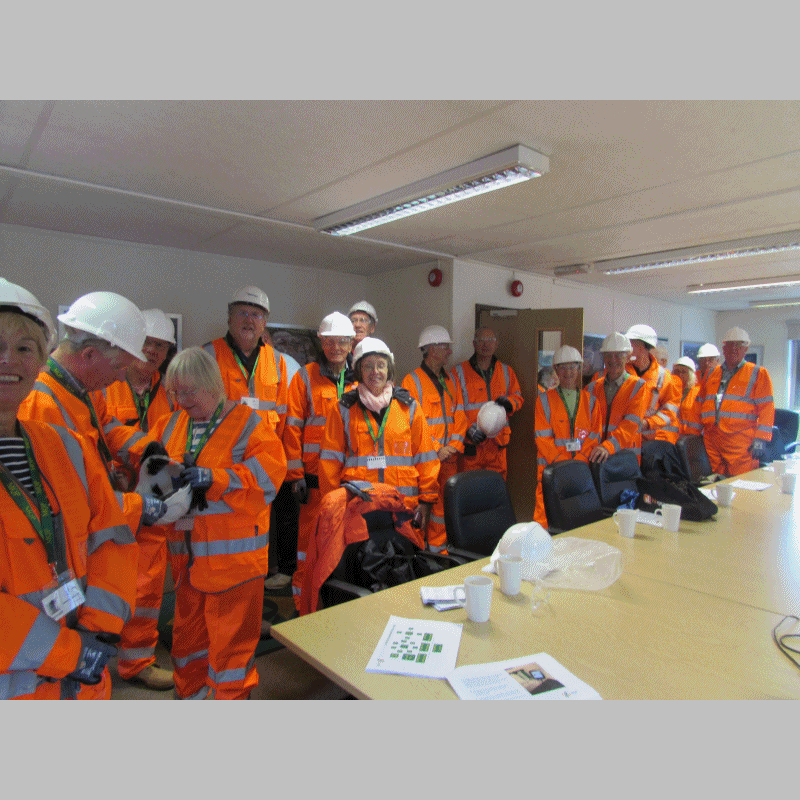
After signing in and having our photos taken (security and safety are taken very seriously on site) we were given a very interesting briefing on the history, geology and workings of the quarry by one of our guides, Steve. We were then kitted out in full safety gear of boots, dayglo jackets and trousers, hard hats and safety glasses. As MQP didn't have boots in all the right sizes they bought in new gear for everybody after we provided the shoe sizes. They also hired in 4 brand new Land Rovers to take everyone around the site which is split over two quarries the Old and the New Cliffe Hill.
After being split int two groups we headed off around the roads surrounding the site were it was pointed out to us how hidden the workings are from the road. Our first stop was overlooking the Old quarry which is still being worked. It covers 120 acres and is about 90 m deep. The huge dumper trucks look tiny when they are at the bottom. The site manager was on hand to answer all our questions. The logistics are amazing. From getting fuel down to the vehicles, to setting and detonating the explosives, to getting the rock back out of the quarry, the numbers are staggering. They export 4.5 million tons of granite per year; that's about 12,500 tons a day! There is a constant stream of trucks and trains leaving the site.
From there the Land Rovers took us down into the quarry and through the 700m long tunnel back into the New quarry where the rock is crushed into chippings and some is coated with bitumen to make asphalt. Again the scale of everything is amazing. Next we visited the control room where they control the loading of the trucks and trains. Then it was back to the offices to say our thank-yous to everyone who had made it such a special day, and to remove all our safety gear.
It wouldn't be a Industrial Heritage trip without a pub lunch so we headed over to the Fieldhead Hotel for a very good lunch, excellently and efficiently served.
Saturday 29th June 2019. Cragside House, Morpeth.
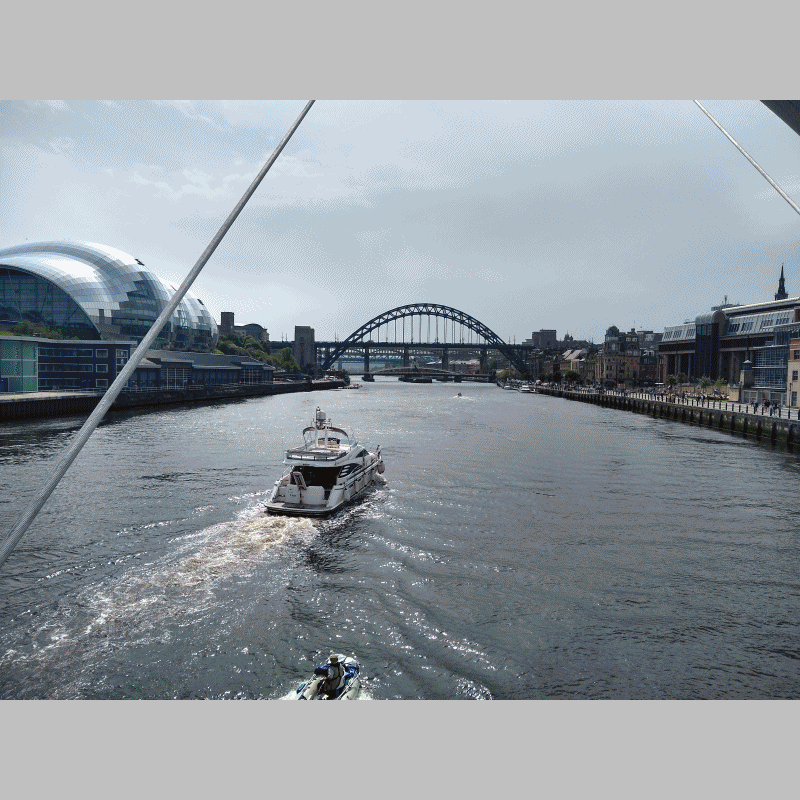
Once checked-in at the Premier Inn on the Tyne quayside in the heart of Newcastle, we set out to explore the town. The Baltic Flour Mill on the Gateshead side is now an art gallery but also has a great view up and down river from the 5th floor and also one can watch the 700 breeding pairs of Terns sitting on the narrowest of ledges hatching their young. The smell was exceptional!
For Saturday night, I'd booked us into a pub right next to the swivelling Millennium Bridge in the heart of the night life. Despite the resident DJ and half a dozen hen night parties trying to drown out any conversation, we had a great evening watching the world go by and seeing the bridge swivel whilst it changed colour due to the floodlights on it. And the food was pretty good.
Bright and early (well not too early!) we set off to Cragside House, a 45 min drive further north. We were just in time to miss a 5k footrace around the grounds but at least the coffee shop was open!
We all split up to wander around the house, and what a house! As you approach it, it hangs on the side of the hill like a Victorian Rivendell. The entrance through a gated archway to a courtyard could be medieval. The house itself is apparently mostly "Tudor Revival" but building work continued in stages for almost 20 years so that it is a mixture of styles.
Downstairs the house is quite homely, if somewhat larger than your average house, but the rooms are not overlarge and the kitchen is next to the dining room, quite novel for big houses at the time. The kitchens have an early electric dishwasher and a hydro electric rotisserie amongst many other gadgets. However leading off the lounge and down in the basement is a full Turkish bath with sweat rooms, massage rooms, plunge pool and showers. Ever the inventive engineer, the heat from the baths was used to help heat the rest of the house. A hydraulically-operated lift goes to all floors, mostly to help the staff move coal to all the rooms for fires. The bedrooms on the next floor are also relatively modest although there are lots of them and some are en-suite and with dressing rooms attached.
On the next level it suddenly becomes a lot more grand. The gallery, once Armstrong's museum, houses portraits, sculptures and paintings by many famous artists. This leads around the corner to a very imposing drawing room with the most enormous marble inglenook fireplace. It is so large that that end of the room is actually supported by the cliff outside to take the weight! The room contains a faction of Armstrong's artworks since many were moved to Bamburgh Castle when the last owners moved out. It does however still have a Turner tucked away in a corner as it is probably not grand enough!
The gardens and surroundings are huge - there is a 6 mile drive around the estate to get out! Electrical power for the house comes from a turbine powered by water from one of the lakes. There are ornamental gardens and vast numbers of rhododendrons and trees but the house is the main attraction.
From there some of us then visited Warkworth village and its ruined Norman castle, still very imposing, and some even managed to briefly get to the seaside at Amble but it was a bit too rough for paddling!
After a very nice Italian meal in the evening, followed by a trip to the pub, we rose refreshed and ready to tackle the Discovery Museum in the city about the life and times of Tyneside. A very interesting display of everyday object through the decades bought back many memories. Other displays of ship models, aircraft engines, cars and electronics showed the diversity of things made on Tyneside. The main exhibit is Turbinia once the fastest ship in the world at 40mph in 1894 and powered by Parsons' steam turbines made in you-know-where.
An uneventful journey back saw us all back in Ashby by late afternoon after a very successful weekend away.
Wednesday 15th May 2019. Strutt's North Mill, Belper
This proved to be a popular trip and a good turn-out headed off in several cars to Belper on a bright sunny morning. On arrival the Mill laid on the very important coffee and biscuits whilst we watched a short film about the history of Strutt's Mill . We were then introduced to our guide for the day. We were first shown some of the various machines in use before the industrialisation of the cotton spinning process when it was still a cottage industry followed by some of the earlier machines developed by Jedediah Strutt including one which enabled ribbed knitting on an ordinary hand-operated frame. This made him relatively wealthy.
We have all heard of Arkwright and his cotton mill at Cromford which was the world's first water-powered cotton spinning mill. Arkwright was not a wealthy man, and his 'manufactory' was partly funded by Strutt and built in 1771 . Strutt then built his own mill in Belper 1776 to become the second such in the world. The original timber-framed North Mill was built in 1786 but burnt down in 1803 and was replaced by a new one designed by his son William. This was one of the first fireproof structures in the world using cast iron columns and brick floors. This is the building still standing today. Several other mills followed on the site until by the 1850s Belper had a population of 10,000 people.
Our tour continued into the basement to see the building's amazing construction and the site of the waterwheel (unfortunately now removed) which was 18 feet in diameter and 23 feet long. It was eventually one of 11 waterwheels on site and not even the largest!
We now assembled outside for a tour of Strutt's Belper, the streets of cottages which he built to attract workers to the area. We first walked around the attractive River Gardens which were provided for the workforce on their day off.
The mill mostly employed girls so he had to attract families with lots of them but also needed to find work for the men. Belper was traditionally a nail-making town therefore many men joined that trade but also framework knitting was common. (The mill incidentally didn't knit or weave cotton, it only produced spun yarn).
The cottages were better than average to attract incomers and are still standing today, occupying several, still-cobbled, streets. Strutt also built a school and a Unitarian chapel for the workforce. When the North Midland Railway came through Belper it would have cut the village in two, but Strutt insisted that the railway was built in an expensive cutting with 11 bridges over it so that the roads remain level and the trains out of site. It is regarded as one of George Stevenson's great achievements.
The whole area is fascinating and wandering the streets is like stepping back in time. Belper along with the whole of Derwent Valley is a Unesco World Heritage Site.
We retired to a nearby hostellery for an excellent and welcome lunch, very efficiently served by the landlord and his staff before travelling home.
Wednesday 24th April 2019. Taylors Bell Foundry, Loughborough
Loughborough's Bell Foundry is truly part of our Industrial Heritage. The company was founded in the middle of the 14thC when Johannes de Stafford was active only 10 miles from the present site. From 1784 the business was operated by the Taylor family and in 1839 moved to its present location. It is now the last remaining bell foundry in the country and the largest in the world.
As they weren't casting on the day of our visit, we 24 were shown a short film showing how the bell moulds are created and how the bell-metal is poured into the moulds. Bell metal is similar to bronze but with a higher tin content 22% rather than 12%, the composition of which was discovered in China 3000 years ago. Above all other materials, it gives a nice sound and also doesn't corrode.
We were then let into the bell museum back room and allowed to strike the many various old bells, of various tones and some of various metals, all to our hearts' content. It is surprising how little force is needed to make a loud noise!
From there we entered the factory proper to see bells both old and new being prepared for installation. Taylors do not just cast the bells. They make the headstocks from which the bells hang, the frames in which they sit and the steelwork or woodwork which fits into the bell towers. They also make the wooden bell wheels to which the rope attaches and which is used to make the bell swing. Everything is made pretty much by hand or by ancient machinery.
We then saw the only bit which is modern, that being the bell tuning. As cast, the bells are not necessarily in tune either to themselves (bells make several notes when struck) or to other bells in a set. Taylors themselves developed the Five Tone Principle in 1896 by which all five principle harmonics are fine-tuned to give a purity of tone. The tones are nowadays measured by computer but it is still down to one man to machine small amounts of metal off the bell by hand at the right places to get the bell in tune. Take off too much and the bell will sound flat and would be scrap!
Taylors claim to have cast more large bells than any other foundry in the world and have made more than 200 bells larger than 2 tons since 1862. The largest is Great Paul for St Pauls Cathedral in London weighing in at almost 17 tons and cast in 1881. However the largest functioning bell in the world was cast on New Years Eve 2000 in China and weighs a staggering 116 tonnes.
We then looked at the foundry shop itself, where the bell moulds are buried in the ground before casting. This is to get them low enough to be able to pour into safely but mostly so that they cool down slowly without cracking.
After a return to the museum shop for some of us to buy trinkets and mementos, we retired to the Three Nuns pub for lunch and to discuss all that we had seen and heard. Another great day out.
Next month's outing will be a week earlier than usual, on May 15th, with a visit to Stott's North Mill at Belper, one of the very first factories in the world followed by a guided tour around the old town to show its connections to the mill.
Wednesday 27th March 2019. Amazon Fulfilment Centre, Rugeley

Once on the warehouse floor, we were led straight up to the 4th floor of the huge storage area. Gavin explained that every new item stocked by Amazon is first weighed and measured so that the computer system knows how big and heavy it is. Items are then scanned and randomly placed on the shelves (the location is also scanned!) so that popular items are scattered throughout the shelves. This stops bottlenecks forming with all the pickers wanting to go to the same place to pick up the latest computer game, book or DVD.
When an order is received, a picker is despatched to collect the item, put it in a plastic tray and place it on the huge conveyor system. If someone has ordered multiple items these are diverted to a holding station until all the items are together. They then go to the packing area where the computer tells the packer what size box is needed and provides a barcode label describing the destination address, the couriers name and the delivery date. The filled box is then scanned again and checked that it is the correct weight (i.e. the right objects are inside) and adds a printed human-readable address label. It then goes to the dispatch area where trucks take everything to the couriers' distribution depots. Barcodes are used everywhere to keep track of where everything is at any time. As we walked around it was noticeable how few people were on site. Although apparently they employ some thousands of staff, the operation runs 24/7 so only a fraction of the staff are present at any one time. And the building is HUGE. It might look big from outside, but inside you can't see from one end to the other!. There are 18 Fulfilment Centres in the UK alone, and this isn't their biggest Centre by far.
Amazon now offer an express same-day delivery option in certain areas. Rugeley used to hold the record for the fastest delivery, from a customer placing the order to delivery at their house in just 13 minutes!!
A truly interesting morning's introduction to the world of Amazon. And we got a free gift.
Saturday 23rd February 2019. Claymills Pumping Station
There were 22 members and 2 guests for our visit to the Claymills Victorian Pumping Station on its first 'steaming' day of the year.
After tea or coffee at the Stoker's Rest cafe, we were split into 2 groups for our guided tour. Our group was led by Steve, the other group by Mike, both very experienced and knowledgeable, they knew every nut and bolt on the site, Steve having been a volunteer for 25 years! They gave lots of technical detail on sizes, weights and powers and this can also be found on their excellent web-site (http://claymills.org.uk/index.html).
The first stop was the Dynamo House, with ancient looking 'blade' type breakers for switching on the DC circuits, far too dangerous for modern use. Onto the workshop, built in 1900 and restored from a ruinous state. All the machines were steam-driven via belts and pulleys, another health and safety nightmare, but an efficient use of the available steam and safe if you keep your hands away from moving parts. It also had a false floor covering a pit to allow work on traction engines. Up next was the forge, complete with a working blacksmith hammering away to make 4 large nails. ..no mass production here. Once outside, we stood in awe of the 35m chimney, belching smoke from the boilers, and were told the top 10m had to be replaced after the debris had been cleared by hand through a tiny soot door at the base. Also, outside was a sewer-cleaning steam engine being run for the very first time since restoration. One of the enthusiastic machine operators reminded the group that 2019 marked the 200th anniversary of the death of James Watt, and the 250th anniversary of his invention of the separate condenser...as if we could forget!
It was then time for the star attraction, the newly restored steam driven beam engine, Engine B. After 6 years of toil, the restoration engineer has now promised to get the last and very rusty Engine A, back to working order. Unfortunately, problems with the boiler prevented this engine running while we were there, but its gleaming polished brass and wood fittings left us is in no doubt it was a working masterpiece. So it was onto the boiler house were we saw coal from Russia or Columbia shovelled by hand into the mechanical stokers feeding the boiler, the bright red glow through the fire door lighting up the gloom. They also burn scrap wood to warm up the boilers to keep the temperature and the costs down but it all means more manual slog. With 5 boilers and with Engine A restored our guide said it would be the first site to have the capability to run all 4 engines at the same time. It also boasts having 32 working original ancillary steam driven engines, thanks to careful storage and cataloguing by the station's last Chief Engineer.
The finale was seeing Engine D in full operation and later, Engine C being started, a complex synchronised action requiring manual movement of the steam valves. The beams are unusual for their riveted box construction and the Watt speed governors are works of engineering art. Lastly, we went into the only bathroom on site, a tiny windowless room below ground level. The decor here, unaffected by daylight, was key to the redecoration of the engine halls back to their original colour scheme. Use of the bath was a special treat but to get hot water required careful control of steam flow directly into the bath water!
There are about 250 volunteers and about 5000 visitors per year. The visit gave an insight into the workings of these magnificent engines, the lives of those who worked there and the dedication of the volunteers who have restored and managed the site.
Wednesday 23rd January 2019. Coventry Transport Museum

The museum is free (as was the car park & the bus for those of a certain age) and well worth the money! It specialises in the vehicle makers who made Coventry famous as the heart of Britain's car industry. It all started with bicycles. Over a 100 yr period there have been 450 cycle makers in Coventry. They came in all shapes and sizes from boneshakers and velocipedes to penny farthings to 4-wheelers. One enormous 'bike' had 7 pairs of wheels and seated 14 soldiers as a means to move troops around quickly!
Someone inevitably had the bright idea of putting an early petrol engine in one and the motorcycle was born. From there it was but a short step to add more wheels and some weather protection and the car was with us. Because of this centre of excellence, Coventry remained the heart of the British car industry until the 70's. Here we saw all the cars that we or our parents owned or at least wished we'd owned. Triumphs, Rovers, Hillmans and Jags.
The final gallery is dedicated to 2 machines - Thrust2 and ThrustSSC, both Land Speed record holders. The latter, 54 ft long, weighing 10.5 tons and powered by 2 Rolls-Royce engines out of a Phantom jet fighter, still holds the record at an incredible 763mph - faster than the speed of sound.
A lovely museum packed with interesting exhibits. And did I say it's free.
Wednesday 28th November 2018. Museum of Timekeeping
The trip to the British Horological Institute's Museum of Timekeeping at Upton Hall near Southwell proved to be one of our most popular venues with 27 members coming along. We were met by one of our guides for the day, Dawn Barnes, who ushered us into the ballroom of the Hall where we were introduced to Viscount Alan Midleton, President of the BHI and former watch expert on the BBC's Antiques Roadshow, who gave us a talk on the history of British watch & clock making and of the BHI.
The first mechanical clocks were made in the 13th century by or for the church. They were not very accurate but they told people when to attend church services.
It was as early as the 17th century when clocks were accurate enough for people to realise that the world and the universe were not as regular as we thought. The sun did not go round the Earth exactly 24 hrs every day. It varied. Therefore Mean Time was proposed. This is the average length of day measured over many years. A solar day can vary by as much as 15 minutes throughout the year. Clocks, not the sun, now determined the passage of time.
Incidentally a clock is technically a timepiece which sounds the time. (The word clock derives from the medieval Latin 'clocca' meaning bell.)
The BHI was formed in 1858 to promote British horology The British were world leaders in clock and watch manufacture until WWI when the makers all went over to war work. In the meantime, the USA forged ahead with cheap mass-produced watches. During WWII the Swiss did likewise, leaving us with no market for our watches. The industry has been a specialised trade ever since making mostly high-end handmade watches.
Dawn then told us about the development of the GPO's speaking clock. For a small fee one could phone a number and hear the exact time and therefore set your watch or clock. The first speaking clock went into service in the UK in 1936 and four different machines and 5 different voices have been used up until the present day. The museum has the first 3 machines on display and were heard both the 1st and 2nd machines play. The 2nd has the familiar voice of Pat Simmons whose voice was used from 1963 to 1985.
Alan then showed us the watch actually used by Capt Scott on his ill fated expedition to the South Pole. It was a cheap alarm pocket watch as seen in a photograph of Scott in Antarctica. Although not suitable for accurate timekeeping, its alarm was used to wake the team every two hours so that they would move about, eat something warm and not get frostbite
Dawn told us the story of John Harrison 1693-1776 the inventor of the first truly accurate marine chronometer which could be taken aboard ships to enable them to calculate their longitudinal position. His final clock H4 was accurate to just 5 secs after 81 days at sea on arrival in Jamaica.
We then had time to wander round the museum to marvel at the hundreds of timepieces (which Alan personally winds every week on Tuesday at 11am) and wonder at the ingenuity of the clockmakers.
Afterwards we lunched at the Saracen's Head in Southwell which was where King Charles I spent his last night of freedom before being handed over to the Parliamentarians and his subsequent beheading.
Yet again an excellent visit and even those not particularly interested in clocks said how much they enjoyed the day.
Wednesday 17th October 2018. Triumph Motorcycles
Our much delayed trip to Triumph Motorcycles Factory Tour took place on the 17th. We had planned to go last year but the Visitor centre was not completed in time. So 13 members arrived at the Triumph factory gates on their huge site in Hinckley. The whole operation looking much larger than expected.
Triumph bicycles started in Coventry in the 1880's but inevitably turned to motorcycles in 1902. Having survived several previous bankruptcies and mergers it was rescued from bankruptcy yet again in 1983 by John Bloor of Bloor Homes fame, who invested £80m into the company, before he eventually broke even in 2000. He is still the sole owner but his son Nick is now CEO. The company owns 3 factories in Thailand making components and in India and Brazil assembling bikes for the local market. They currently make 50,000 bikes a year.
After the obligatory cup of coffee, we were introduced to our guide for the morning, Roy. In a slick operation we were divested of all cameras, smartphones and coats and kitted out with high-viz jackets and radio earpieces so that we could hear Roy over the noise of the factory. (Actually most of the noise seemed to come not from the machines but from a piercing siren which notified that the production line had stopped. This continued almost the whole time we were there as it also coincided with the workers lunchtime!
The tour started with the huge warehouse where all the incoming components and outgoing bikes are stored. Computerised forklift trucks put all the parts away in the right place and then take then out again when production needs them. From there we went into the factory proper and Roy explained how the various parts particularly the engine crankshafts and camshafts are machined to extremely tight tolerances. We then saw the engine-building line and the bike assembly. Different bikes come down the line and all the right parts miraculously arrive just in time to be fitted. Everything is very much state of the art. Such was Roy's enthusiasm that our 90 min tour was nearer 2 hours as everything was explained in detail yet there was still more to see.
After some lunch in the visitors' café, we had a look round the museum which includes some famous bikes such as Richard Gere's from 'Officer and a Gentleman' and Steve McQueen's iconic fence-leaping bike from 'The Great Escape'. Triumph bikes seem to have been the first choice for the movie makers at one time, having also starred in 'The Wild One' with Marlon Brando amongst others, but recently Japanese bikes seem to prevail.
An excellent tour and so very different to the equally excellent tour of Norton bikes last year where almost everything was done by hand.
Wednesday 26th September 2018. Cadbury World and Bournville model village
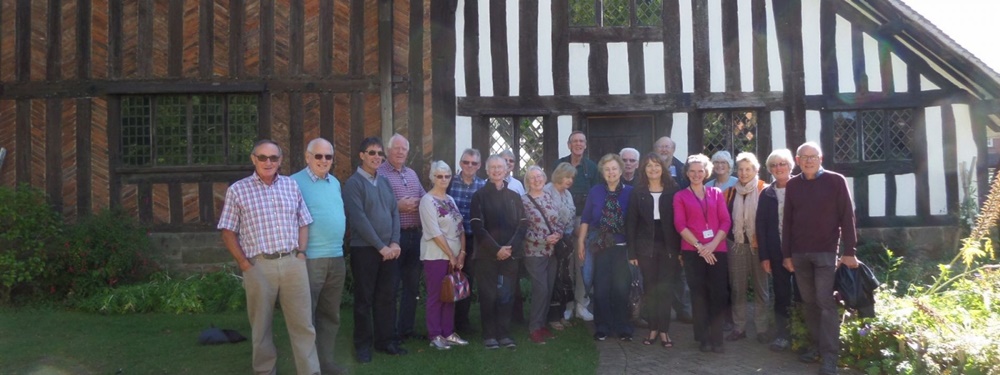
Once the doors were opened and with the merry band suitably refreshed, we ventured into Cadbury World along with 3 school-loads of young children! After wandering through the Aztec jungle and viewing the story of chocolate production and the Cadbury family's marketing of same, we were allowed to regress to our childhood and to taste, eat and play with chocolate to our hearts' content. We finished off with a so called 4D ride - a 3D cinema ride complete with added chair movements - as we fell into vats of chocolate, ascended to the sky and fell back onto a roller-coaster with the inevitable broken section! We all returned safely, but I suspect the some of the young stomachs of our school companions, now full of chocolate, were a bit queasy.
As an antidote to all that excitement, we next walked the short distance to Selly Manor in Bournville village where our guide Gillian gave us an introduction to the village's history before leading us on a walk around the village green and gave us a fascinating insight into the history and present state of Bournville and the Bournville Village Trust (BVT) which oversees the whole area. Amazingly Bournville consists of over 8000 homes and 25,000 residents. That is twice the size of Ashby according to the 2011 census! Approx. half the homes are owner-occupied and the remainder rented, but the two are thoroughly intermixed so that you cannot tell owned from rented properties. All are controlled by BVT so that owners cannot change the character of the houses.
The model village was set up by George Cadbury at his own expense in 1893 to "alleviate the evils of modern, more cramped living conditions" There are also schools, shops, a library and several places of worship. (Although the Cadbury's were/are Quakers, they allow all religions and sects to built a place of worship there, if there is a need).
Interestingly you never had to work at Cadbury's to live in Bournville, nor do workers have to live there. The village Trust was separated from Cadbury's the factory in 1900 and BVT still have several of the family on the committee, whilst the Cadbury business is now owned by Mondelez International, formerly Kraft Foods.
After looking at all this chocolate, and resisting eating too much of it, we were now hungry and so set off to the delightful Barnt Green Inn for a late lunch. The food and service was excellent although a misunderstanding over our previously paid deposit cheque, amongst other things, caused the payment by each individual to be reduced to a long drawn out farce and, as we were now late leaving, we had to endure the rush hour all the way back to Ashby.
Nonetheless it was agreed that we all had a great day out and, as is the intention of the U3A, we all learned something new. We must say thank you to Gillian for our excellent guided tour and we are now pictured on their website as an encouragement to other adult groups to visit Bournville.
Friday 17th August 2018. Swindon and Didcot railway weekend
For a Friday morning, the traffic was very co-operative on the M42 past Birmingham so we arrived at the Steam Museum of the Great Western Railway in good time to adjourn to the Cafe. The Museum is in part of the old Swindon locomotive works and its buildings date from 1840 and 1865 - they continued in use until 1986. Eventually we all gathered and proceeded round the exhibits which give a very good impression of what life in various parts of the works was like, although without the former noise and grime. The second section is arranged to illustrate various facets of the Great Western Railway. As a museum, it is very well thought out and informative.
We had intended that afternoon to go to the Crofton Pumping Engines on the Kennet and Avon Canal but, unfortunately, shortly before our trip, we discovered that they would be closed for building work. Some (dare I mention the ladies?) decided to go to the nearby Designer Shopping Outlet whilst those of us of a less frivolous disposition went to the Railway Village. When the railway arrived in 1840, Swindon was only a hamlet some way to the south. Having decided to establish it's locomotive works there, the Great Western had to arrange accommodation for the workforce. Brunel designed a complete Railway Village, all of which still survives largely unaltered. In due course, a church, school, hospital and educational Mechanics Institute followed, all largely financed by the Railway. As the Village included pubs, and after a long and arduous survey, it seemed only right and fitting to adjourn to the Glue Pot for a pint in a building designed by the great engineer.
We stayed overnight at the Holiday Inn Express at Swindon, which provided excellent value for money with comfortable rooms and a good buffet breakfast. Dinner was at Sally Pussey's, a pub and restaurant at nearby Wootton Basset which provided an extensive menu in satisfyingly large portions.
Saturday morning saw us at Didcot, home of the Great Western Society. Here, a former locomotive shed dating from 1932, houses over 40 locomotives, 40 carriages and numerous wagons. Although the historic buildings remain in their original condition, extensive locomotive and carriage workshops have been constructed. A replacement turntable has been installed as have two traditional signal boxes with signalling. There is also a museum and a newly opened signalling centre which houses the 1930s Bristol East signalling panel (when colour light signalling and electrical control over a wider area were relatively new) and the 1960s Swindon panel. At the far end of the site is the Transfer Shed, which stood in the junction at Didcot from around 1860 to trans-ship goods from broad to narrow gauge wagons. It houses replica broad gauge track, two locomotives and two carriages. Looking at these, it is easy to believe the fabled coroner's verdict (no one has ever traced the original) 'Died from cold and exposure whilst travelling in a Great Western Railway second class carriage'! Two demonstration lines were in operation offering train rides; one with a tank locomotive which would have worked local services in places like Birmingham and London and the other with the steam railmotor, a self-propelled coach, forerunner of our current multiple units.
From Didcot, we proceeded to Pendon, a museum in the nearby village of Long Wittenham. In 1925, an Australian named Roye England arrived in Wiltshire and fell in love with the Vale of White Horse. Even then, change was beginning to erode the traditional landscape and Roye determined to capture it in model form. It has since grown into a truly wonderful landscape exhibition. The models are 4mm to the foot scale (the same as Hornby trains). The scale is huge - trains disappear into the distance and as, they pass, you can appreciate the detail. For example, the dining car has all the tables correctly laid for a meal. If a cottage is thatched, it is really thatched using hair; if tiled, the tiles are applied individually. The smallest model is a cabbage white butterfly - even if you do need a microscope to see it properly!
The traffic also co-operated for our return journey, arriving back in Ashby around 6pm.
Wednesday 25th July 2018. Tattershall Castle and RAF Coningsby
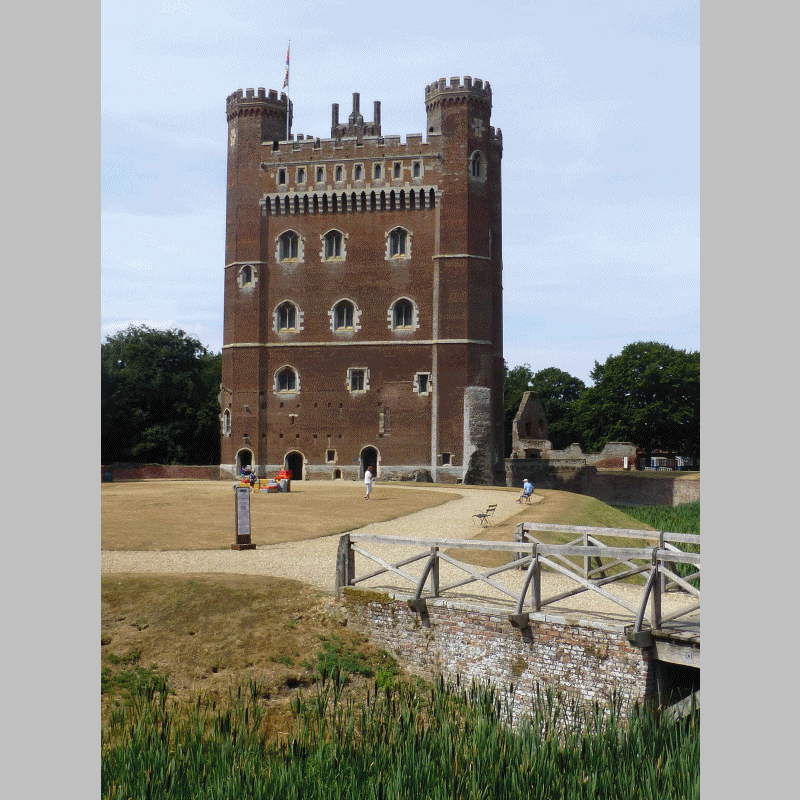
Wednesday 27th June 2018. National Computing Museum Bletchley Park
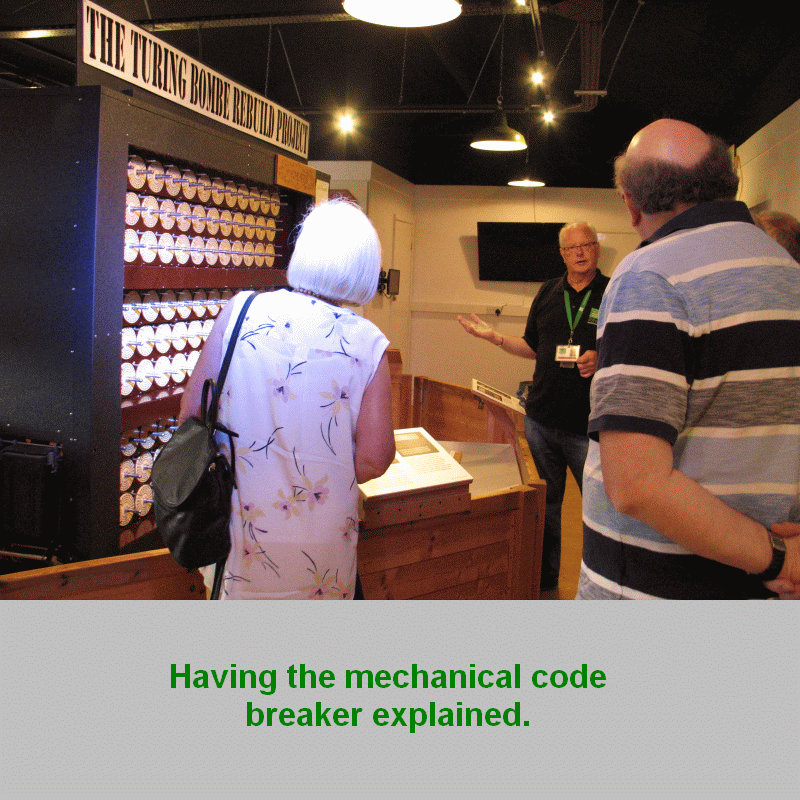
The museum is usually closed on Wednesdays but is open for pre-arranged tours. Our tour was supposed to start at 10am and last about 2 hours. In practice it started a bit late and finished at 1pm. Our guide covered the start of computing from the mechanical Bombe machine used to break the Enigma code via Colossus which broke the Lorenz code, the Harwell machine later called Witch and the Edsac computer. These were all valve based digital computers with very limited power and memory measured in a few thousand bytes rather than the current millions and billions of bytes. We then moved onto transistor based computers. We were shown magnetic core memory and early disks. The latter were about 1 metre in diameter and storing 200 megabytes where current disk drives hold terabytes of data and are about 5 cm diameter.
We finished at the internet display area. The only part there wasn't time to cover was the history of software section which was a bit of a disappointment to the ex-programmers in our group.
Our guide was excellent and was ready to answer all our questions. We had not realised we had overrun our alloted time by almost an hour.
At 1pm we went for lunch in a 40s-themed local hostelry, the Eight Belles. Afterwards, three of us decided to travel home but the others returned to the Park to visit the Amatuer Radio Museum within Bletchley Park but were unable to get in without paying the full £17.50 Bletchley entrance fee.
Thursday 24th May 2018. Bristol docks, Temple Meads Station and Clifton Suspension Bridge

A full turnout of more than 50 members assembled at the Royal Hotel car park at 7.50 am on a chilly morning (after all the previous hot weather) for the coach ride to Bristol to see some of Isambard Brunel's finest works. Despite the rush hour traffic around Birmingham and a comfort stop on the way, we were no more than a few minutes late getting to Clifton Suspension Bridge. The threatened torrential rain held off to allow us to walk over the bridge and up to the view point overlooking it. However the overcast skies did not give us as good a view as it could, but the bridge spanning the gorge is still spectacular.
A short drive took us on to the SS Great Britain where we were booked in for a guided tour. Some took the opportunity (rarely missed) to grab a coffee or bite to eat. As we were such a large group we went round in two parties. Our guide told us of the construction, history and eventual preservation of the ship and was excellent at describing the conditions aboard for both the 1st and 3rd class passengers on Great Britain's many Atlantic crossings. It was also used for many years to carry immigrants to Australia, as a troop transport in the Crimea War and as a bulk coal carrier.
Some stayed to investigate the newly-opened Brunel museum whilst others took the bus or ferry-boat into Bristol city centre whilst yet others visited Brunel's original Great Western Railway terminus building at Temple Meads which is no longer used by Network Rail. Unfortunately for the last group, access to the main train shed was not possible as it was being used for university exams. However whilst Colin was giving us a guided tour of the outside, we were offered the chance to see into the cellars under the station which used to house the ash pits and are now used as a music, arts and theatre venue.
A guided tour of the engine shed and GWR offices concentrated mostly on the start-up companies working there now, and less on the building itself, but we did get to sit in Brunel's board room and visit the rarely seen attic space.
We all met up at back at the Great Britain for an uneventful coach trip back which returned us to Ashby by 8.45pm.
Wednesday 25th April 2018. Blists Hill, Ironbridge Museums, Staffs
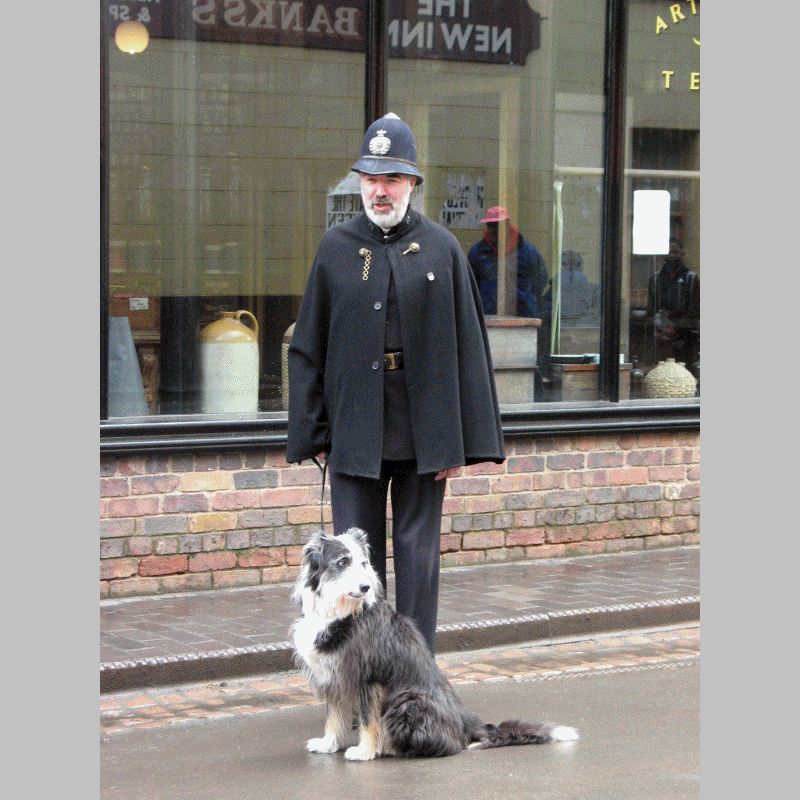
After the customary cup of coffee, we entered the Museum though an interactive light show of various aspects of the 1900's, the time in history that the museum is based on.
Out into the sunshine and we split up and wandered our own ways around the streets from the bank, to the butchers, the bakers and the candle-stick maker. On to the fish and chip shop, pub, sweet shop and the foundry which was pouring some new castings with molten iron from the blast furnace. We chatted to the local bobby with his dog, to the haberdasher and the woman walking a Shire horse. Some later had a ride on a cart behind two Shires. There are many more shops, homes and premises and I suspect few of us saw everything.
After very large lunches at the Brewery Inn in Coalport just over a mile from Blists Hill we drove back just 0.5 mile to the Coalport China site. We arrived just in time for the 14.30 tour. After looking at various examples made at the works till early 1900's, we were taken to see the processes involved in producing the china and finally to look inside a kiln at the firing process. We all left at the 16.00 closing time and after a further cup of coffee, we set off for the journey home.
Wednesday 28th March 2018. Lion Salt Works
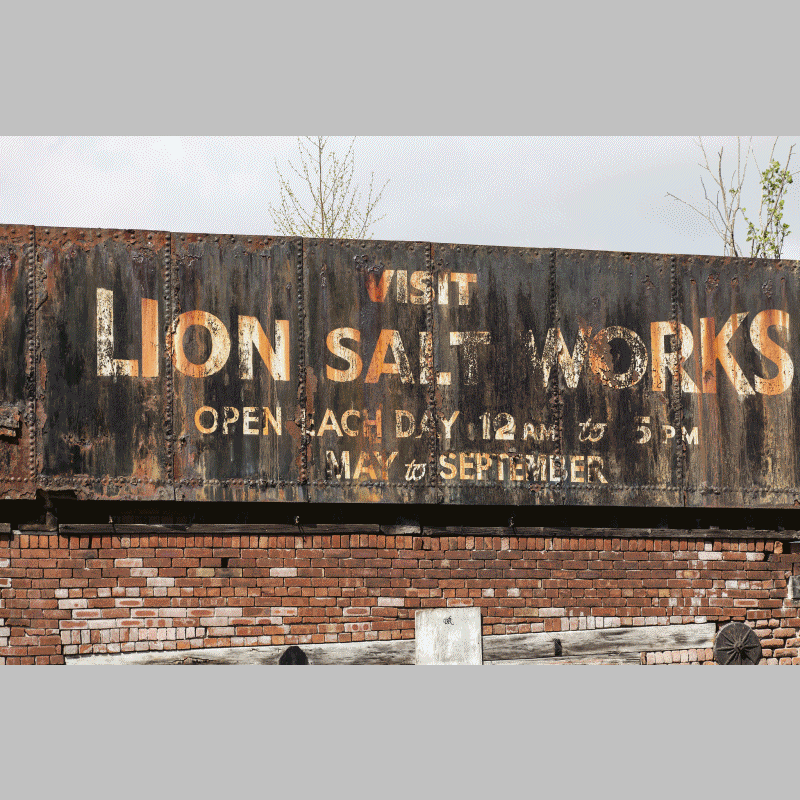
Our first stop was at the Weaver Hall museum who provided welcoming teas and coffee before showing a brief film of the Hall's previous life as a workhouse. We were then free to wander the museum to look at the industrial story of that part of Cheshire from the bronze age to the present day. One interesting artefact was a stone hammer head from the bronze age which was exactly the same shape and size as a modern steel one that we would use today on a sledgehammer!
After a very good lunch at the nearby Salt Barge, we literally crossed the road to the Lion Salt Works where our guide gave us an excellent tour of the works explaining the history of salt production from Roman times until the closure of the works in 1986. The Lion Works extracted brine (salt dissolved in water) by pumping it out of a seam of salt some 20m thick, 30m below the surface. The brine was then boiled in large shallow pans to evaporate the water while men scraped the salt out of the pans by hand before packing it into boxes to be left to dry out completely.
He also showed us how salt extraction has caused major subsidence in the area at various times leading to flooding and the collapse of many buildings, roads and even the canal which has had its sides built up many times to keep it level.
A fascinating story of one of life's most important minerals.
Wednesday 28th February 2018. British Motor Museum, Gaydon
The Industrial Heritage group visited Gaydon museum today. Despite worries about the forecast snow, and various last minute cancellations by members due to illnesses, visiting tradesmen or other pressing needs, 11 of us eventually arrived at Gaydon.
The museum stands on the grounds of the Jaguar and Aston Martin test facility, but unfortunately the test track is hidden from sight so one cannot see any future models testing. We last visited Gaydon in Nov 2014 and quite a bit had changed thankfully. There are over 300 cars set out on display representing some of the best or most unusual vehicles produced by the British motor industry from the earliest times to the present day. Most of the cars are from the old British Leyland collection as unfortunately Ford, Vauxhall and the former Rootes group have declined to show any of their cars there. The few Fords and Vauxhalls that they do have been bought privately or are loaned by private collectors.
There is also a fairly new (not there last time) storage facility at the back called the Collections Centre where a further 250 cars not normally on display are stored along with the Jaguar Heritage Trust collection of prototype and rare Jaguars from their earliest days as Swallow Cars through to the present day. We all took the free guided tours of both the museum and Collection Centre to learn more about some of the most historic cars, and then wandered freely to try to look at everything else. One could spend days here and not study everything.
By 3pm the snow was falling heavily and so we decided to head home. The first few miles were quite treacherous but had mostly cleared by Warwick and the rest of the journey was not so bad. A great time was had by all.
Wednesday 24th January 2018. Pickford House and Derby Museum & Art Gallery
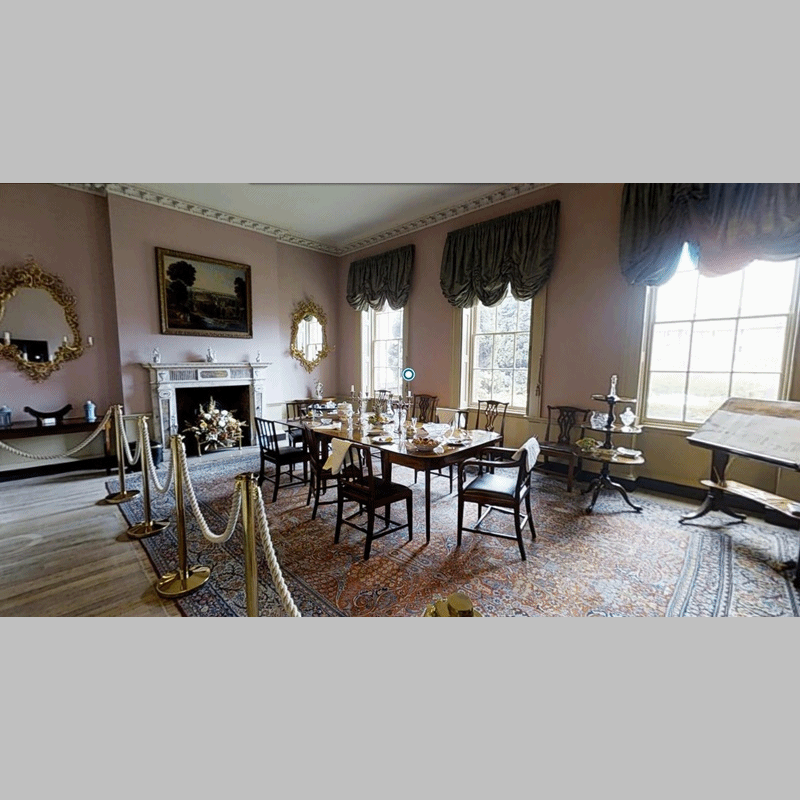
Wednesday 22nd November 2017. Leeds Royal Armouries
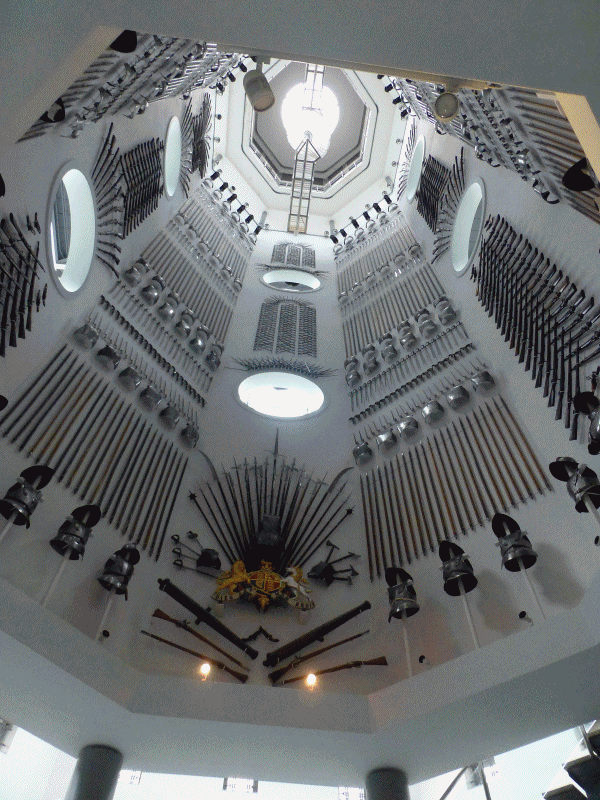
The museum was formed when many of the exhibits from the Tower of London where moved to Leeds as the London site was too small to show them all. There are displays of arms and armour from around the world and from ancient times to the present. The latest included a display of the mobile defences used to create Fort Bastion in Afghanistan. (The HESCO bastion was originally developed by Jimi Heselden, a Leeds entrepreneur and ex-coal miner, who founded HESCO Bastion Ltd)
The museum stretches over 5 floors and is a warren of rooms showing tableaux ranging from famous battles such as Agincourt and Waterloo in miniature to full size displays of horses and even elephants in full battle armour.
Some of us had a go on the crossbow range with the chance to be William Tell for a few minutes, although his son would have been a lot more worried if we had been firing at an apple on his head!
There is apparently a full size tiltyard where they hold jousting contests annually. Unfortunately not on the day we were there.
The highlight of the museum though were undoubtedly the Gallery Talks. I was expecting a somewhat dry explanation of various battles, but we were treated to one of the staff in full Royalist Officer costume recount 'his' story of a fight against a fully armoured opponent during the Civil War (apparently that was the last time a soldier took to the battlefield in full armour) complete with much declamation and sword-waving. The same member of staff (in 19thC costume) later explained the ins and outs of the Battle of Waterloo and allowed us to handle the swords, muskets and rifles. Finally he told a moving tale of an English archer fighting the Scots at Flodden Field in Northumberland in 1513
His knowledge of all things military, and particularly of horses, was amazing and he answered all the awkward questions thrown at him. Well worth the trip to Leeds alone.
The lowlight of the trip was undoubtedly the café which served some of the worst food we've ever come across on our travels. However it didn't outweigh the excellent museum and its staff.
Wednesday 18th October 2017. Great Central Railway
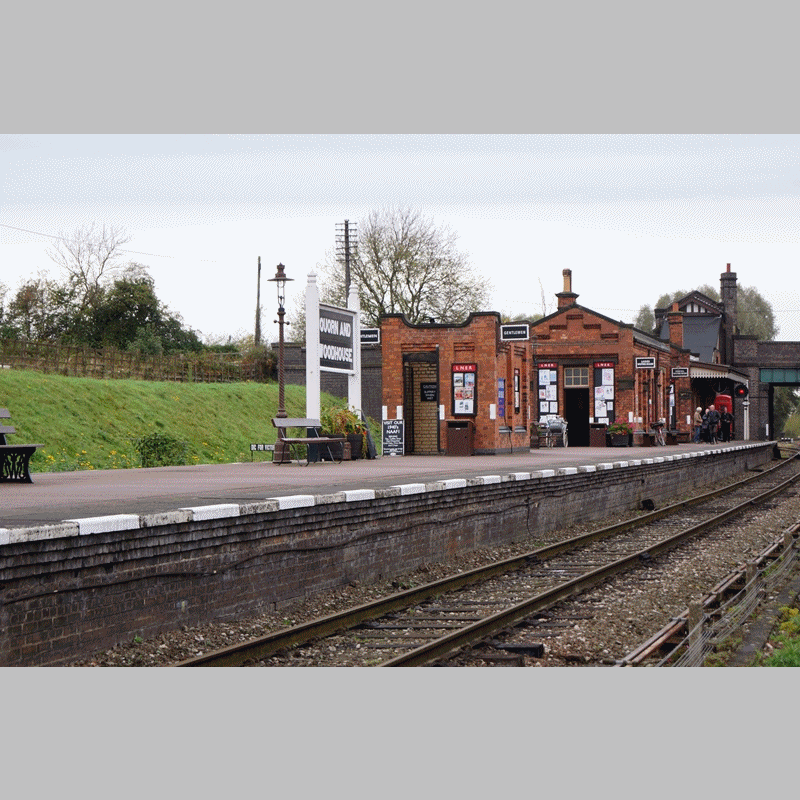
We adjourned to the platform, negotiated at the booking office for tickets and awaited the 1015 train from Loughborough. This was hauled by a small steam tank locomotive, which took us across the Swithland Reservoir viaduct to Leicester. Although there is not much to see here at present, ambitious plans are afoot to construct a large museum in conjunction with the National Railway Museum at York. This will enable much better viewing of a number of preserved locomotives, many of which will have some connection with the Great Central Railway.
Returning on the train to Loughborough, the station there is original and has been beautifully restored. We walked down to the yard to view the locomotives there. These included one, which formerly worked on the line, which had only finished restoration a fortnight previously, some 50 years after it had been withdrawn from normal service. Meanwhile, our engine had indulged in a drink from the original water tank to prepare for its next task.
We re-boarded our train for another trip to Leicester but this time four alighted at Quorn for lunch at the café there, whilst the remaining eight indulged in an all-day breakfast, cooked on the train and served to us. It turned out to be excellent value and, as can be seen from the photograph, was enjoyed by all. On the return journey, we alighted at Quorn to meet up with the other four and to collect our cars for the journey home.
Wednesday 27th September 2017. Duxford
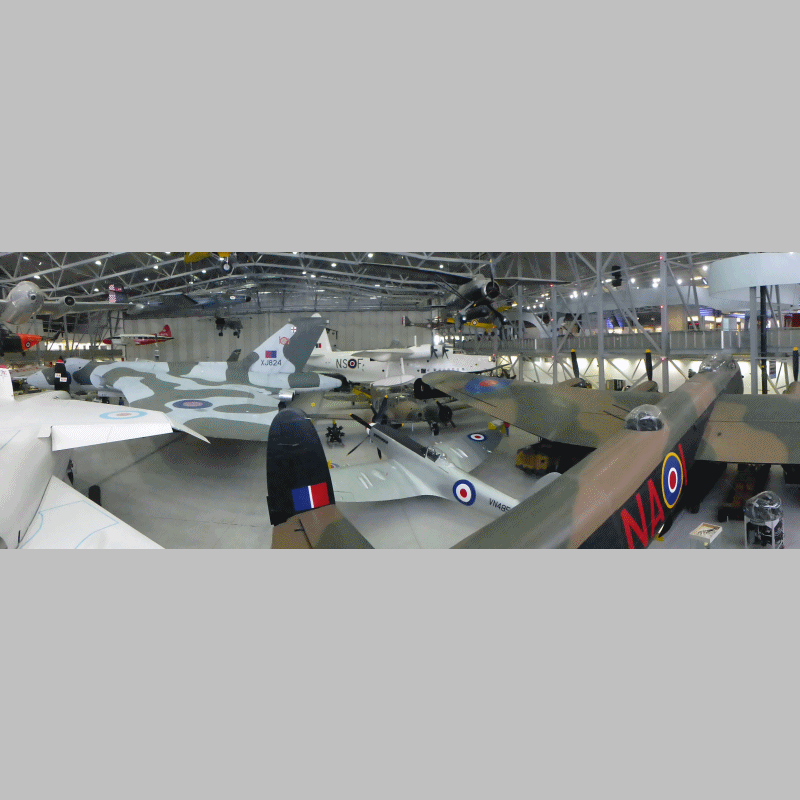
Saturday 23rd September 2017. Barrow Hill Roundhouse
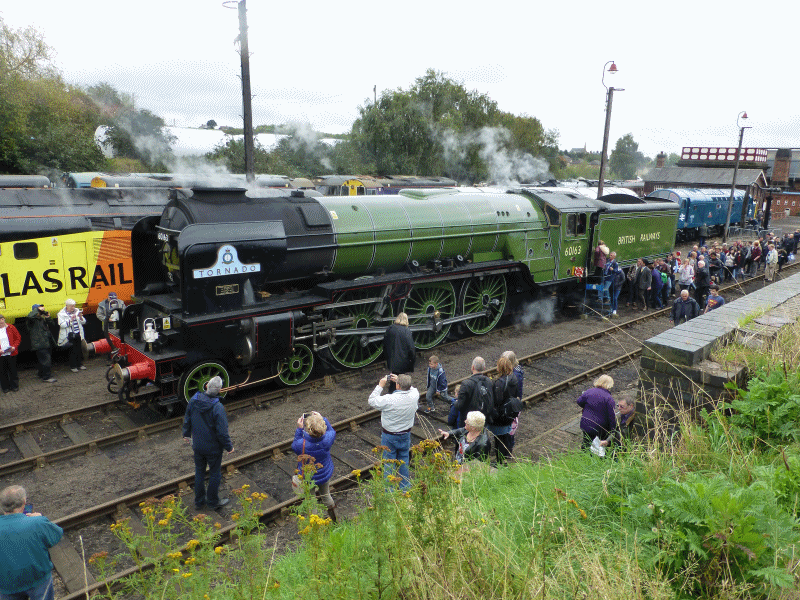
Wednesday 23rd August 2017. Forge Mill Needle Museum
15 members of the Industrial Heritage Group attended Forge Mill Needle Museum near Redditch. We were welcomed with coffee and excellent cakes before being introduced to our guide for the morning. The Redditch area was famous for its manufacture of needles of all shapes and sizes from the middle ages through to the 20th Century. By the 17th and early 18th Centuries, needle making had developed into a cottage industry with many people working in their own homes to carry out some part of the needle making process. Unbelievably there are over 30 different processes required to make a needle and each person or family specialised in one of those processes. As well as making the needles, Forge Mill had a scouring shed in which the black and somewhat dirty needles were transformed into the bright and shiny objects we all know as sewing needles. After our guided tour there was time to visit the rest of the museum with its display of all types of needles and equipment used for their manufacture. The Redditch area also produced high quality needles for use in surgery, gramophones and sail making. There was also a lucrative business in fish hooks and other angling tackle. The longest needle on display was 6ft long. What do you think that was used for? Everyone then adjourned to the nearby Beefeater for lunch and afterwards some took the opportunity to visit the adjacent ruined Bordesley Abbey and the small museum next to the needle museum.
Wednesday 26th July 2017. National Mining Museum, Wakefield
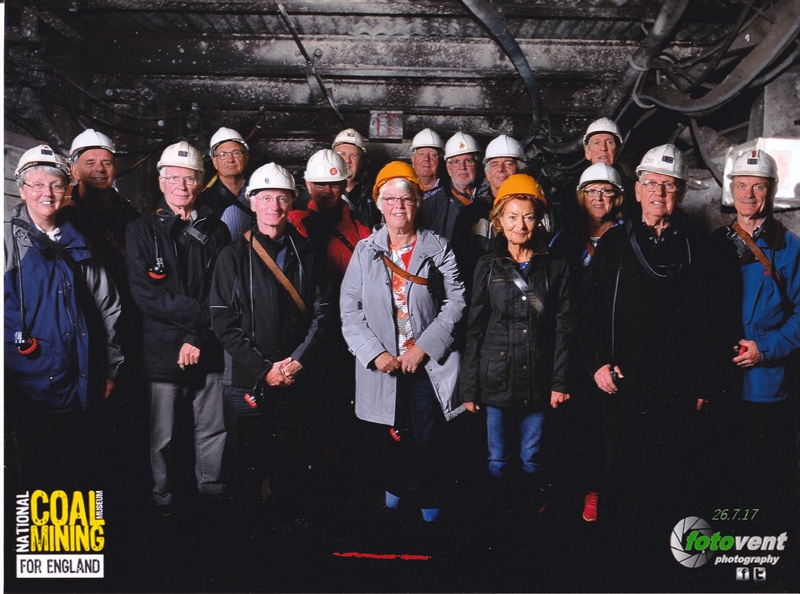
Wednesday 28th June 2017. The Royal Historic Dockyard, Chatham
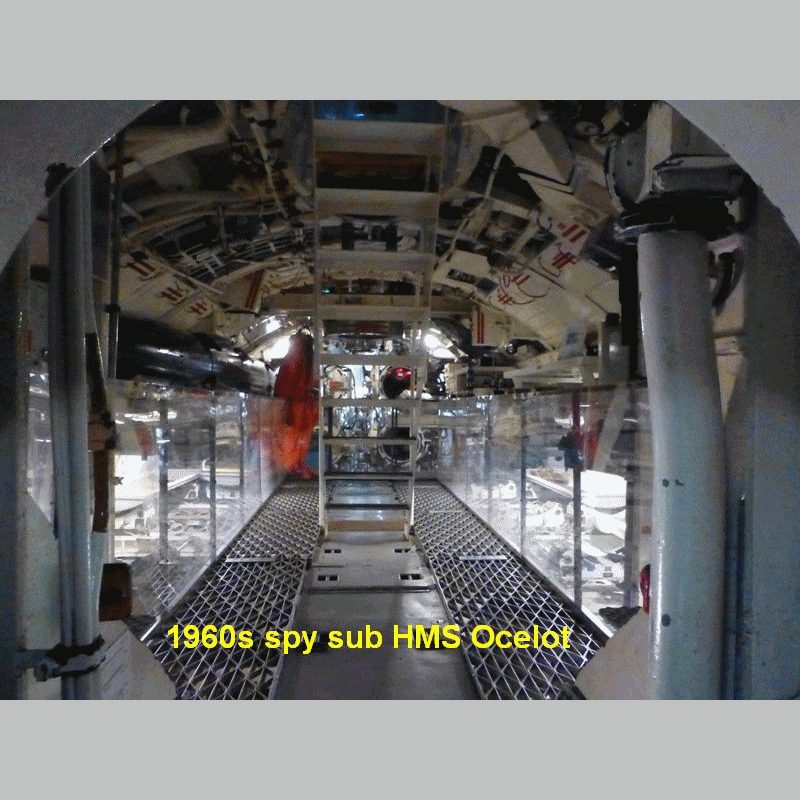
Saturday 10th June 2017. Scunthorpe Steelwork preservation railway
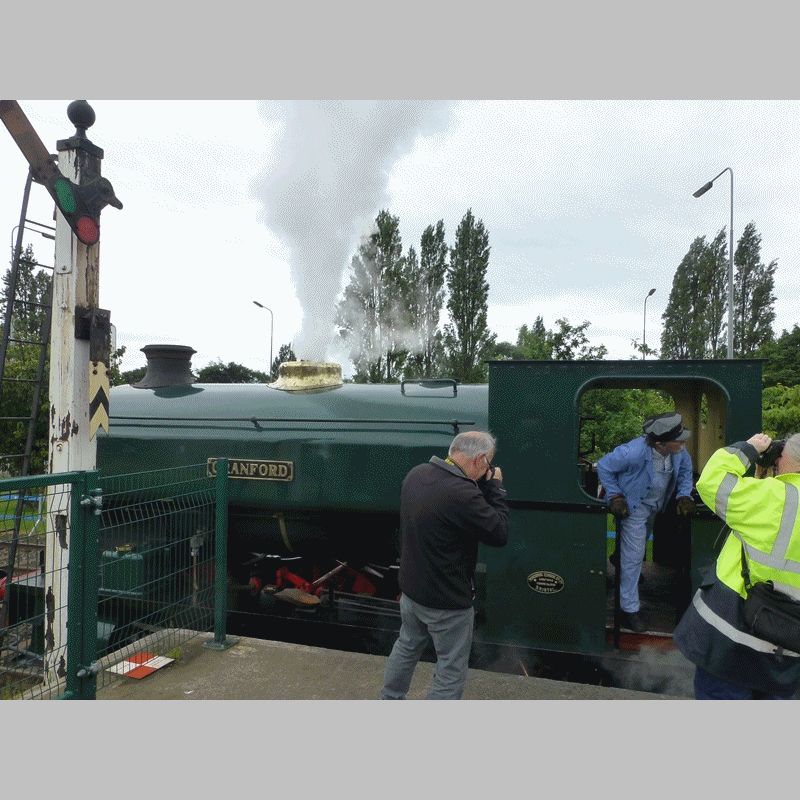
Friday 12th May 2017. Visit to Norton Motorcycles, Donington
Wednesday 26th April 2017. Visit to Ironbridge Gorge
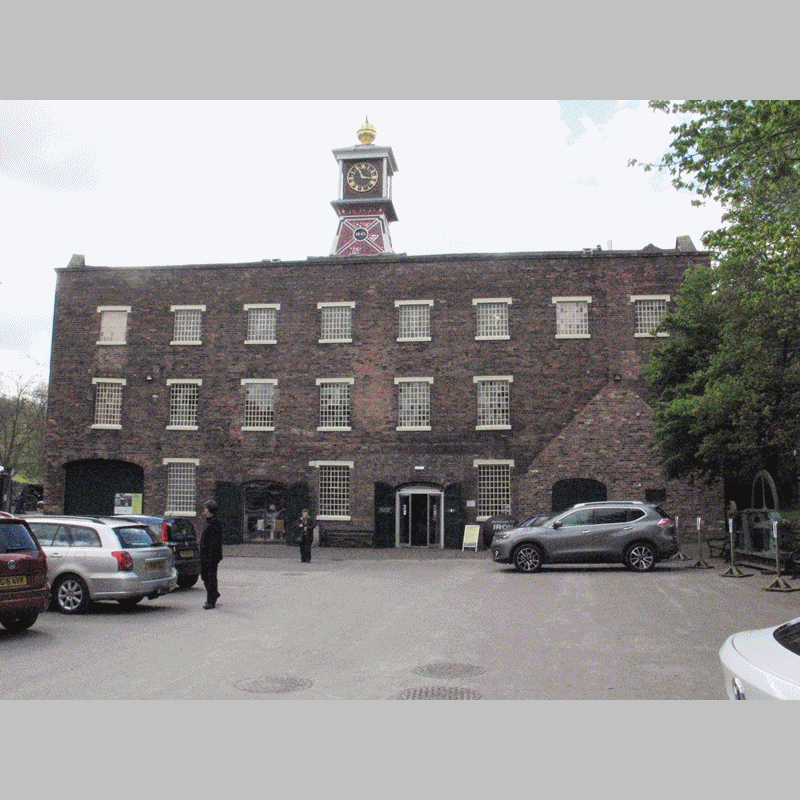
Wednesday 22nd March 2017. National Media Museum, Bradford
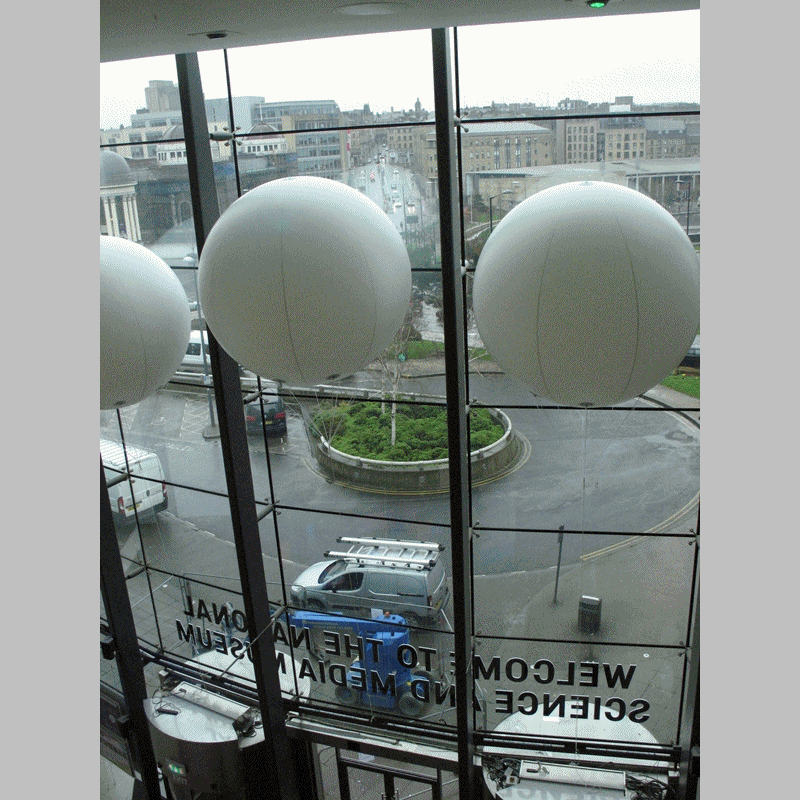
Saturday 25th February 2017. National Space Centre, Leicester
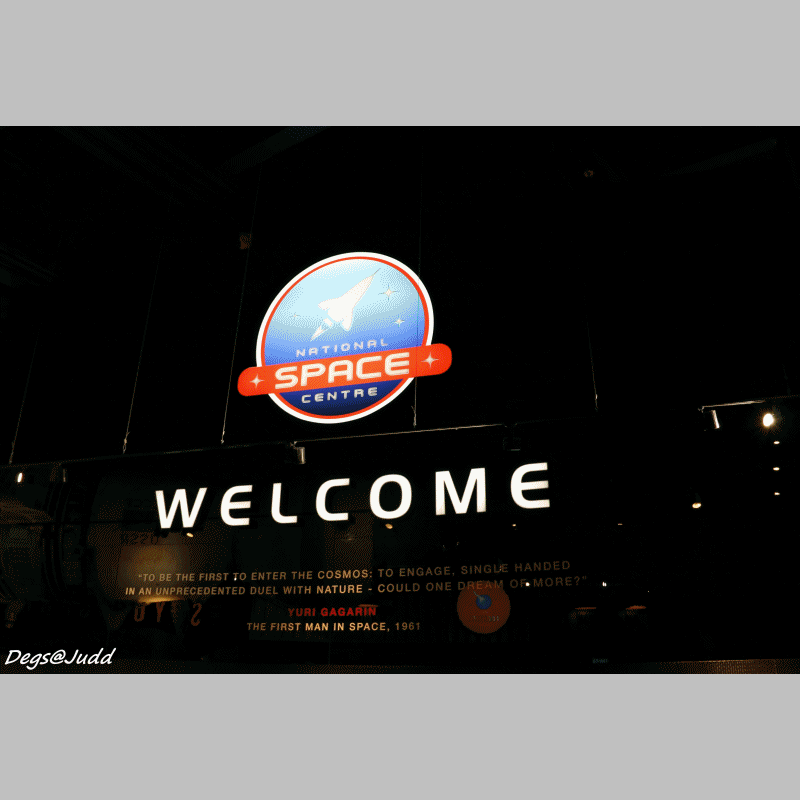
Wednesday 25th January 2017. The City of Caves and Galleries of Justice, Nottingham
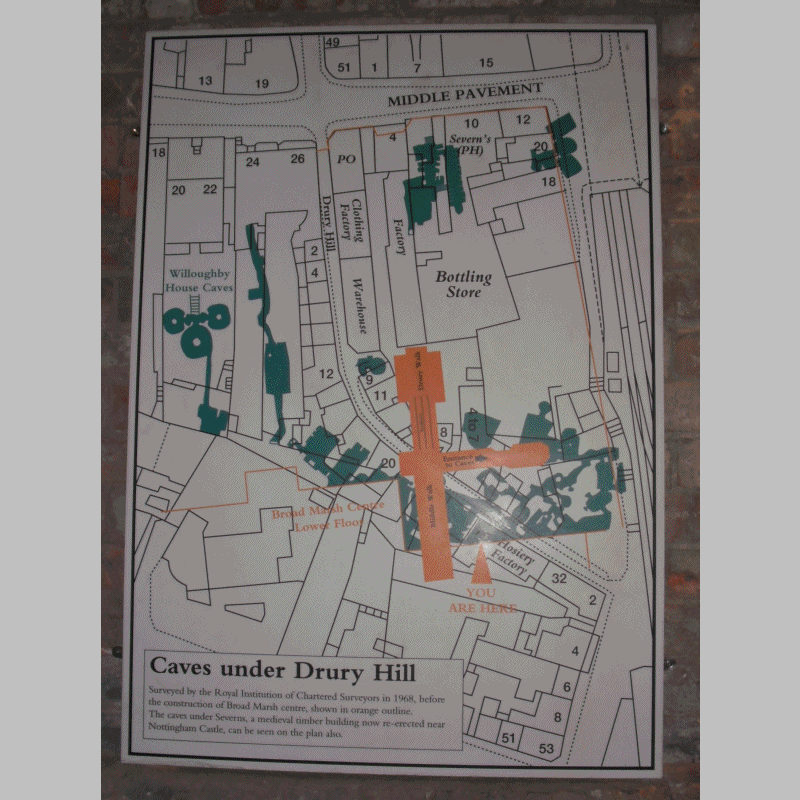
Wednesday 23rd November 2016. The Donington Collection
The Donington Collection is well known for its Grand Prix cars, but much less so for its impressive collection of WW2 vehicles. 14 members assembled at the museum cafe at 10 am on a cold dreary day, glad to be inside for a while. The museum starts with the WW2 vehicles which are all in remarkable condition, most of them restored by the museum staff. Many of the cars, trucks and tanks are German, and impressively large particularly the full-track and half-track troop carriers one of which looked like a tracked charabanc, except for the gun racks! There are also dozens of motorbikes German, British and American; many very rare. A member of staff told us that of 12 known Harley Davidson copies of BMW bikes, the museum has 7 examples. However they don't have a single BSA M20 - the most common British Army bike of the war. The Grand Prix cars in the next halls are the largest collection on view to the public anywhere in the world. Dozens of McLarens, Williams, Force Indias and others. The earlier examples look terribly fragile compared with the modern ones and you soon realise why so many drivers died in the 60s 70s and even the 80s. The final hall full of stunning 50s Vanwalls, Ferraris, Maseratis and a replica Mercedes is the highlight of the collection. A couple or 3 hours is not enough time to do the place justice. I for one shall be going back again soon to browse at my leisure.
Wednesday 26th October 2016. Black Country Living Museum
Despite having to negociate the M6 and M5 in the rush-hour, all 18 managed to get to the museum before it opened, allowing time for a quick coffee. Our costumed guide, having introduced himself, led us briefly around the exhibition area and showed us a 5 min film about the Black Country before walking us down to the drift mine where we were kitted out with hard hats, plus torches for some of us, before our second guide led us into the mine. The hard hats were immediately useful as the walkway was only 5ft high in parts, although in one area the coal seam was 30ft thick and had all been excavated so it was like standing in a cavern. Apparently only the very best miners were used to bring the roof down so that no-one was hurt as it collapsed. When the torches were turned off, the darkness was total. You wouldn't want to be down there with out a light. In fact most of us agreed you wouldn't want to be down there at all for very long! Certainly not to work down there. But many did, and life expectancy of a miner in the 1880's was about 35 years! On emerging into the light, we all went our separate ways to enjoy the rest of the site. With houses and shops to visit complete with costumed charaters ready to explain what went on in the various premises, buses, trolleybuses and canal barges to ride on, a small transport museum to visit, and a pub, cafes and 2 fish and chip shops to sustain us, there was plenty to do. The only set-back was that as it was half-term it was quite crowded and the queue for fish and chips was reportedly over half an hour long. I hope they lived up to their award-winning reputation. Many of us settled for a pie and a pint in the pub. The different car-loads left in their own time but I think most were away by about 3pm to avoid the rush hour, but the traffic was again light and the journey back took less than an hour. A very good day out, and yet again we were lucky with the weather considering it was the end of October.
Wednesday 28th September 2016. Stoke Bruerne Canal Museum
15 members managed to avoid the worst of the road works on the M1 and got to Stoke Bruerne on time. The local guide gave us a very interesting introductory talk about the Boatmen and their families, from whom she is descended. She has researched most of the boat families and has 200 A4 files about them. Their life was not as hard as some imagine as pay was quite good and they often foraged for food so living costs were low. The museum is small but packed with information about the canals, their construction, the boats and the boat people. From there we took a 30 min boat trip up to and just into the tunnel. It takes an hour to go right through and an hour to come back, so we had to reverse out after a short way. Lunch was taken at the pretty thatched Boat Inn right on the canalside and afterwards we spent time watching various boats negotiate the locks. A bright sunny and warm day helped make it a lovely day out.
Wednesday 24th August 2016. Birmingham, Science Museum at Millenium Point and Staffordshire Hoard at the Museum and Art Gallery
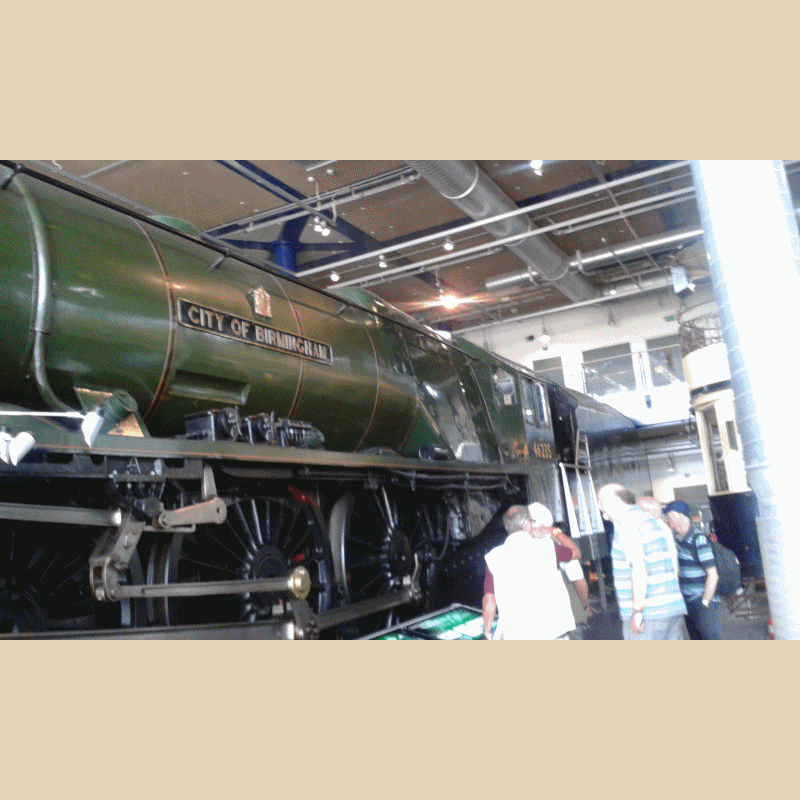
Wednesday 27th July 2016. National Brewery Museum, Burton upon Trent
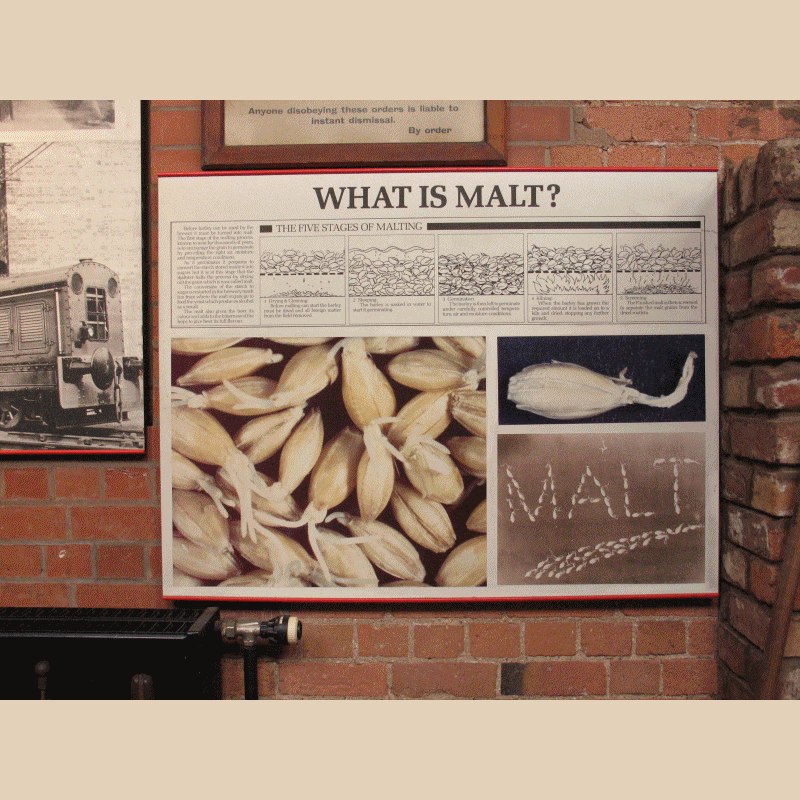
Wednesday 22nd June 2016. Daniels Mill and Severn Valley Railway
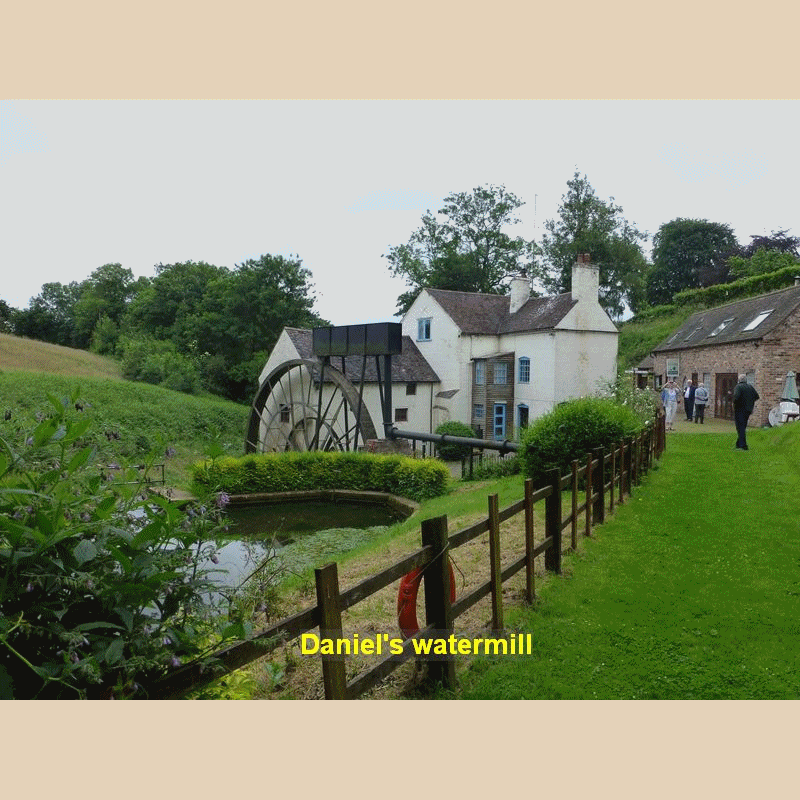
Wednesday 25th May 2016. Bletchley Park
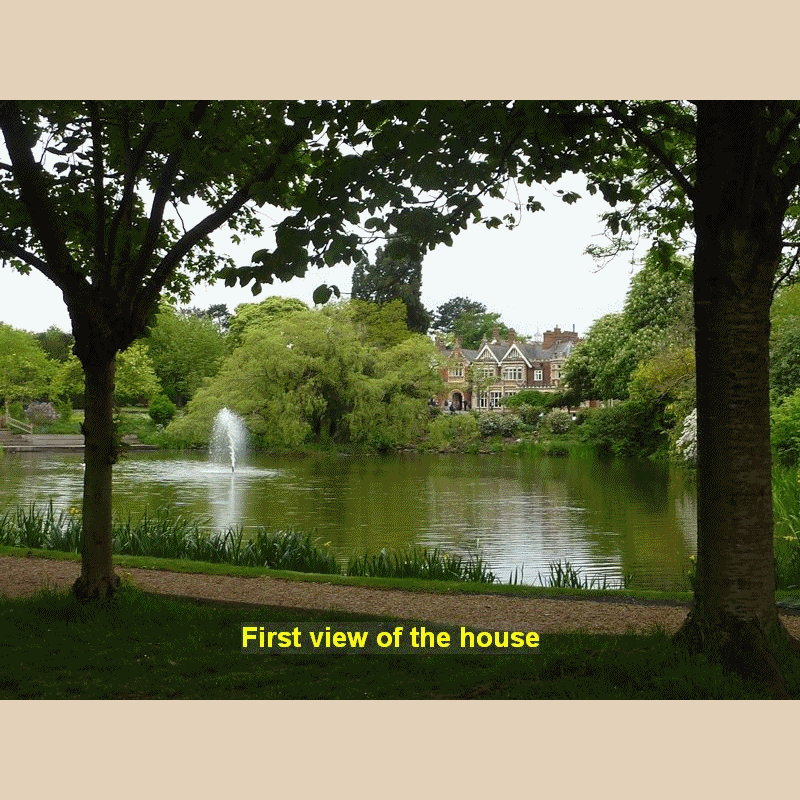
Wednesday 27th April 2016. Midland Air Museum, Coventry
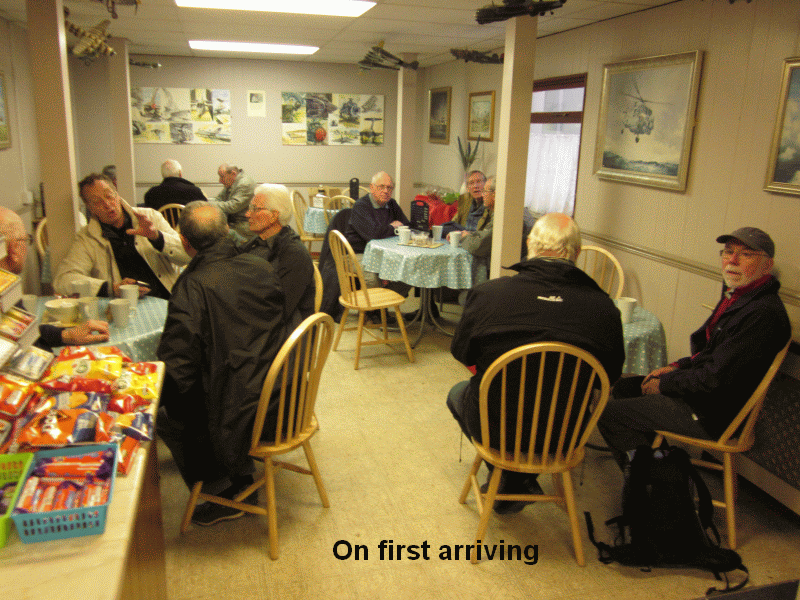
Wednesday 24th February 2016. Bombardier Train Works, Derby
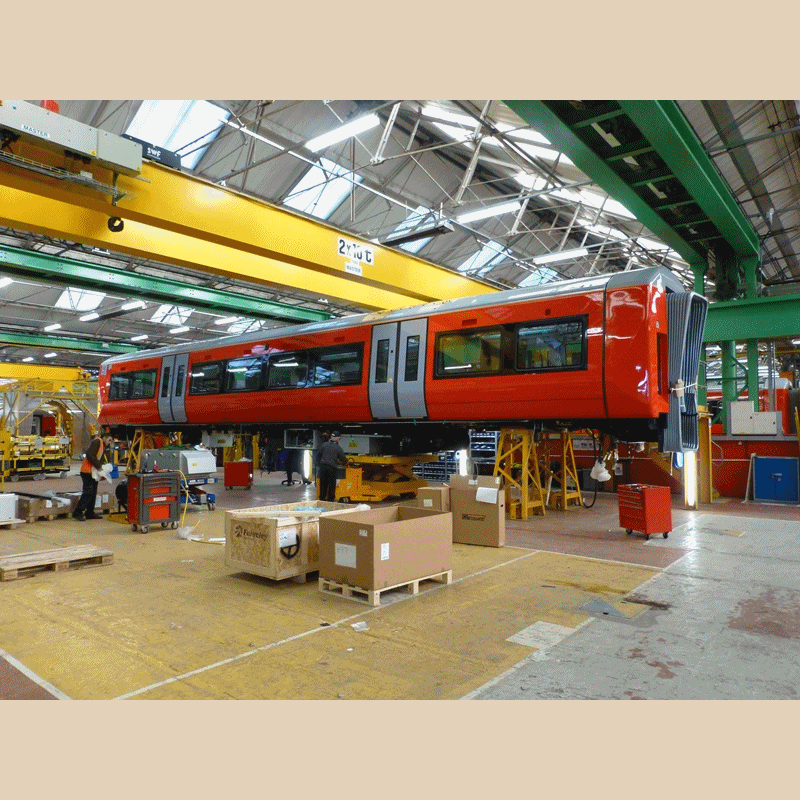
Wednesday 27th January 2016. National Gas Museum, Leicester
18 members gathered for a guided tour around the small, but perfectly formed, gas museum. Our guide Janet confessed that she hadn't lead a tour since October and claimed to be a little rusty, but seemed to us to give a very good talk about the history of gas manufacture and of the various exhibits. Gas was originally used mainly for street lighting, but quickly came into the home and factories as a source of light and heating. Gas cookers soon followed. Interestingly early ovens had no floor or shelves, instead meat was hung from hooks inside just as it would be over an open fire. The meat fat and juices would have fallen on the kitchen floor! Other appliances that were gas powered included water heaters (geysers), irons, curling tongs and even a hair dryer. None of these appliances were flued; the flue gases were just released into the room! As electricity became a competitive energy source even a gas radio was developed but never entered production. As an ex-gas design engineer, it was embarrassing to see projects I had worked on displayed in a museum, but even more so to see my mother's current cooker on display! The museum was free to enter, but because we were given a guided tour and provided with tea and coffee, we felt a donation of £5 each was well deserved. Afterwards we retired to the excellent Victorian-styled Black Horse pub in Aylestone for lunch.